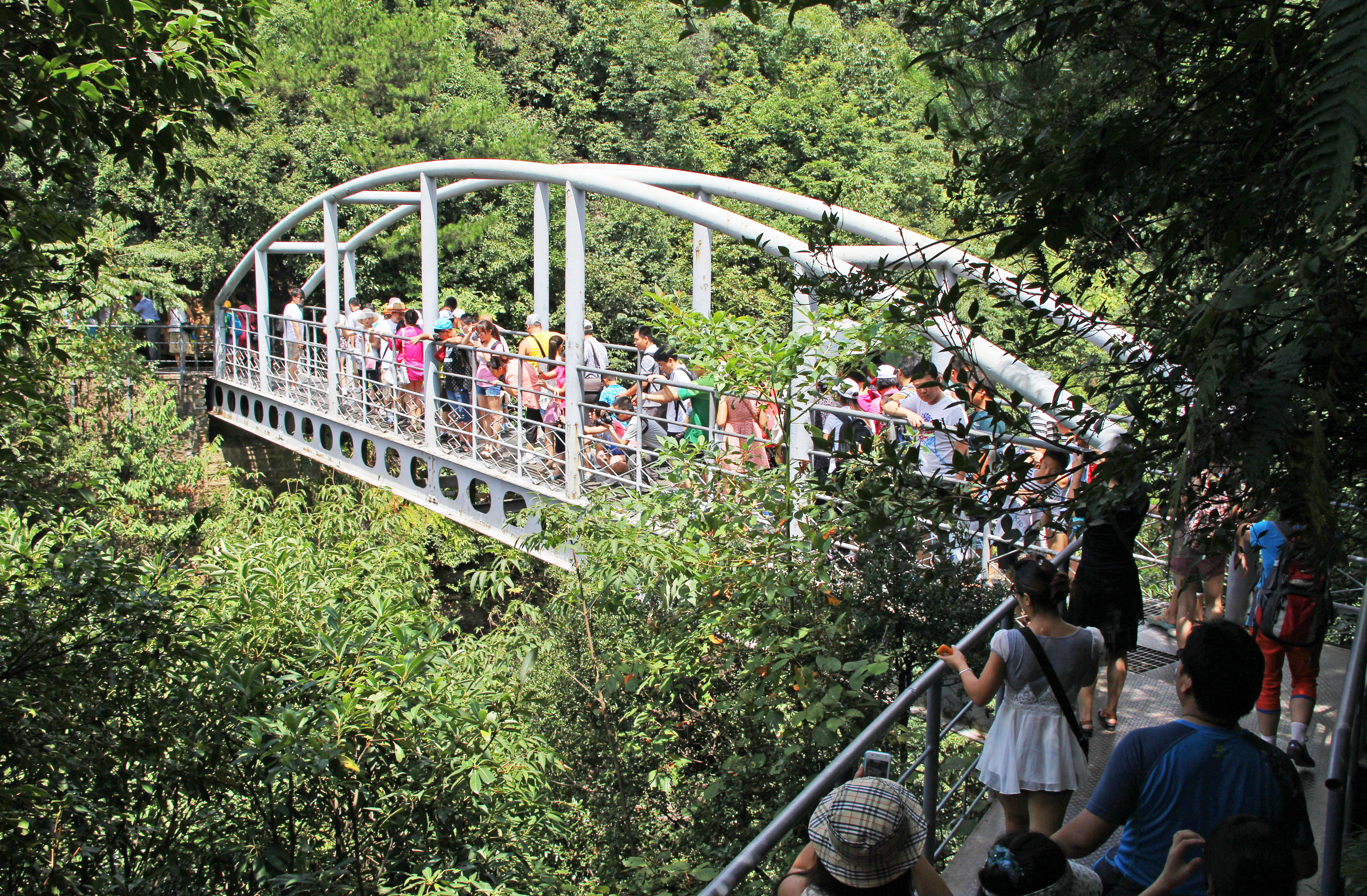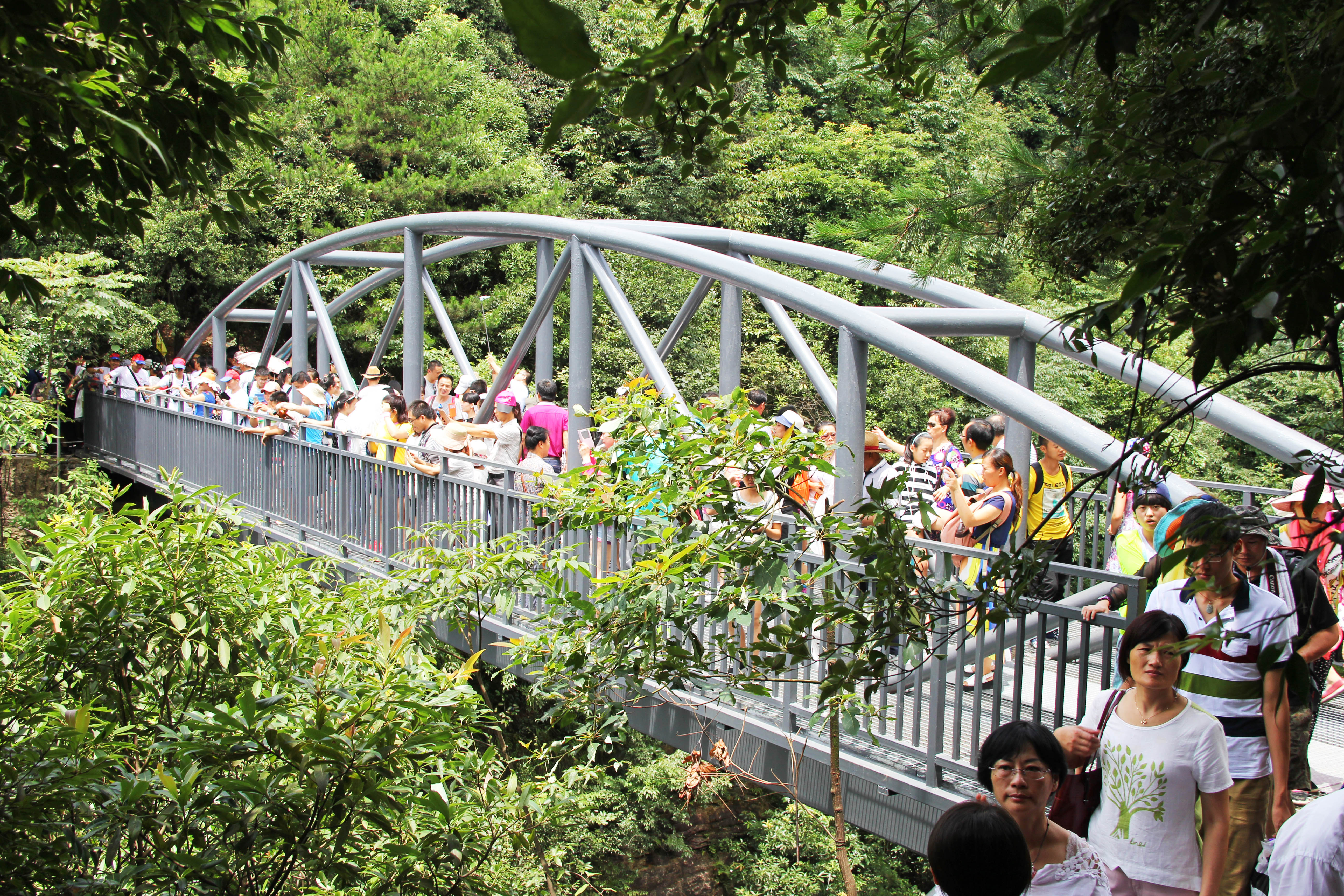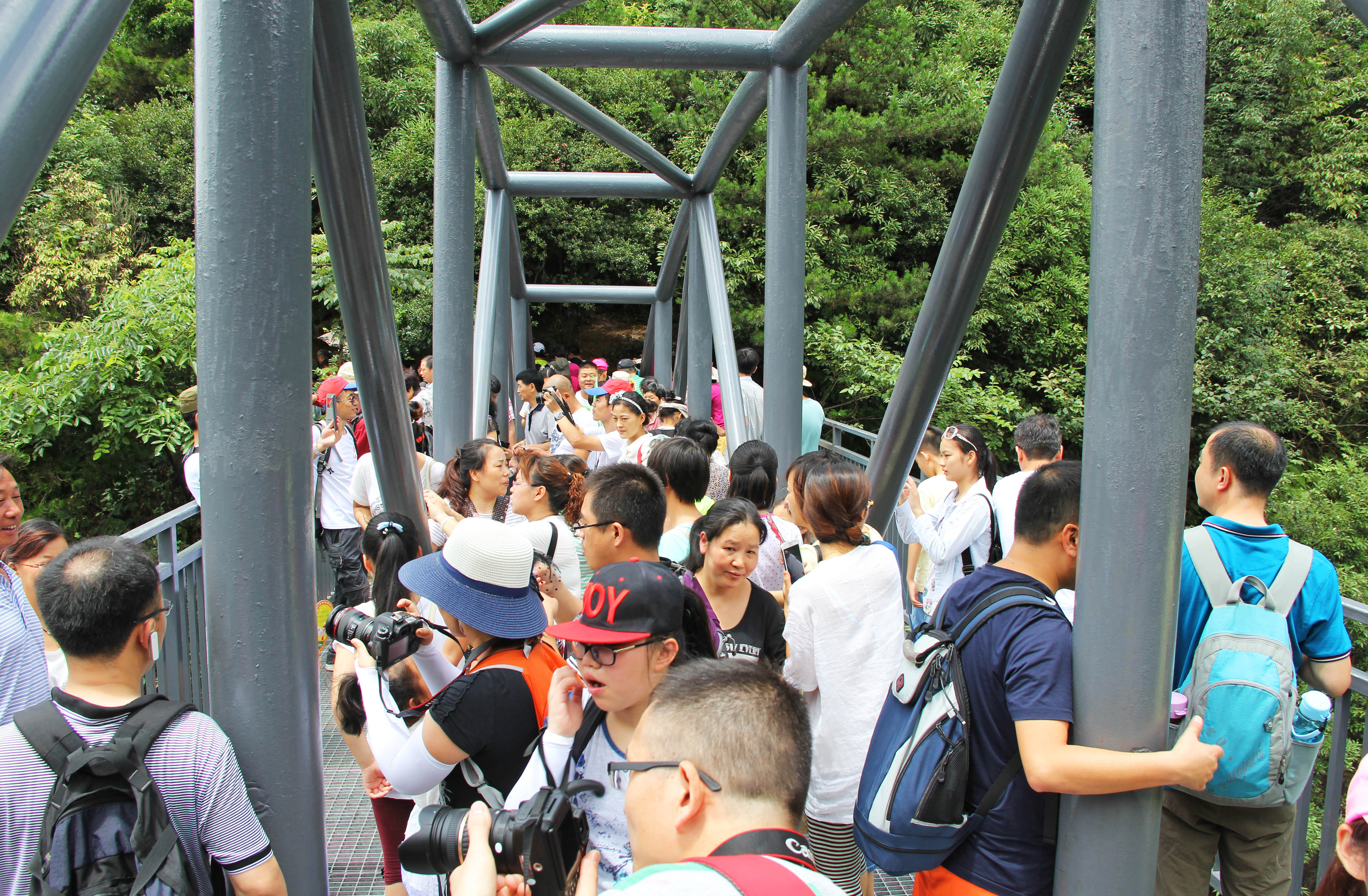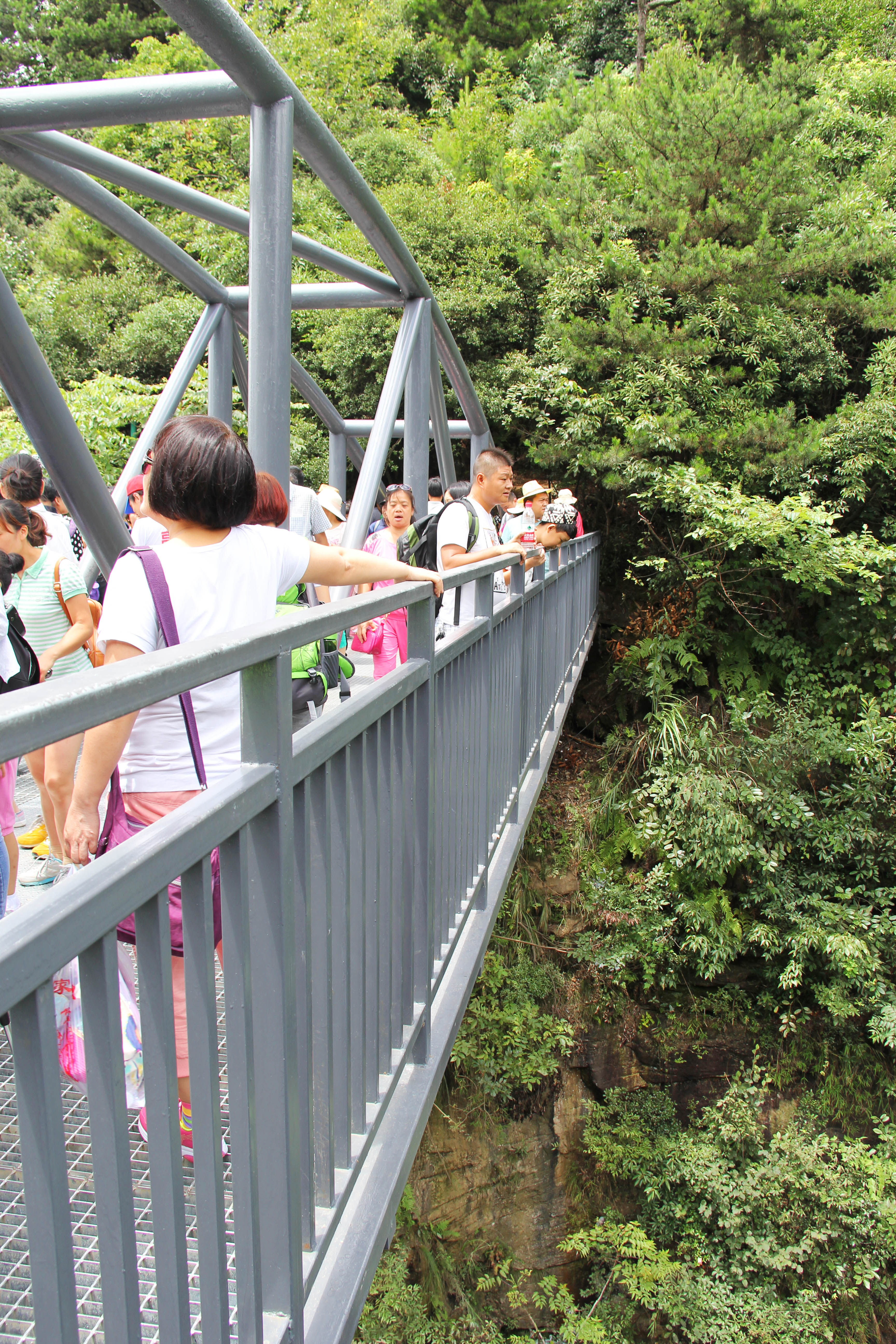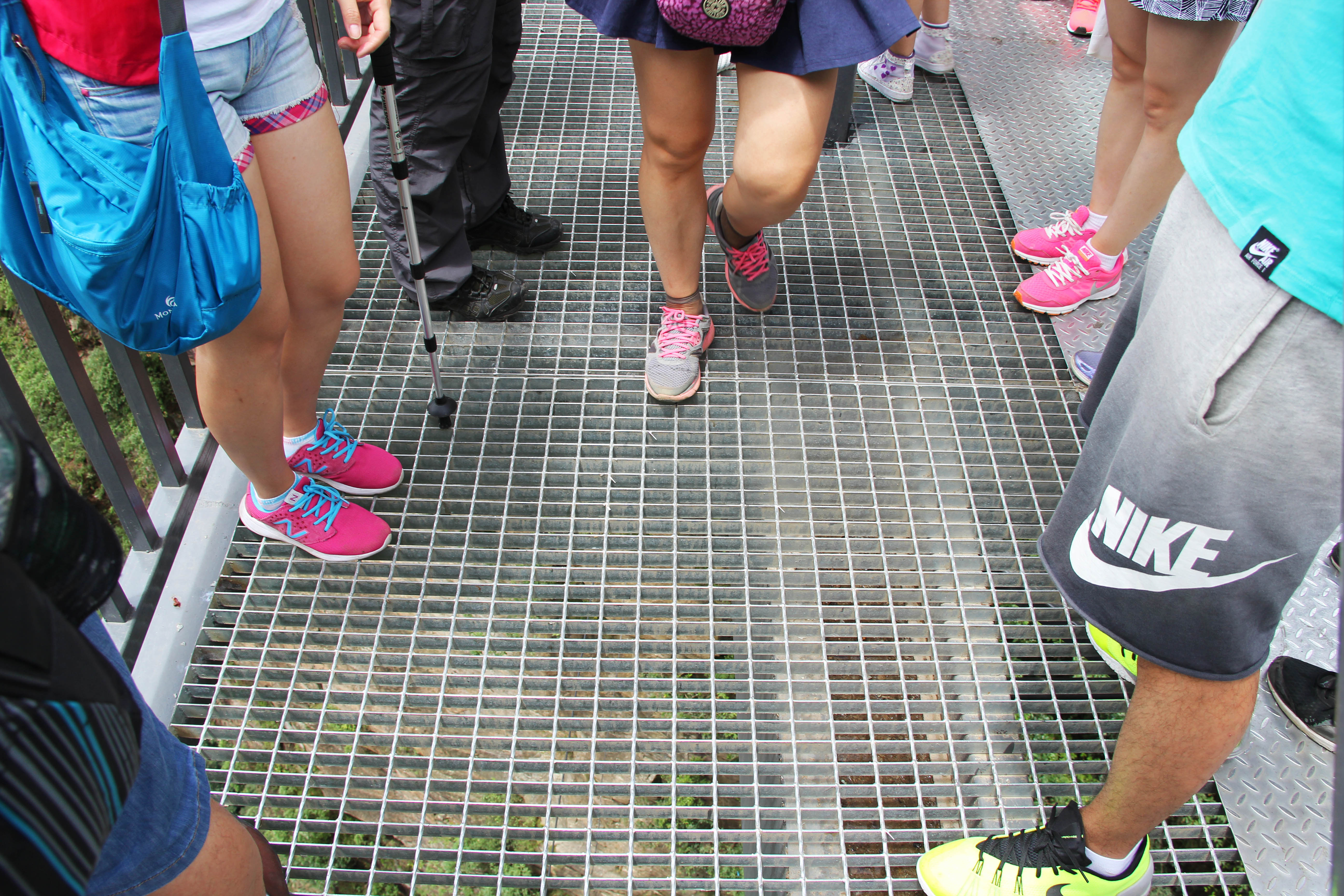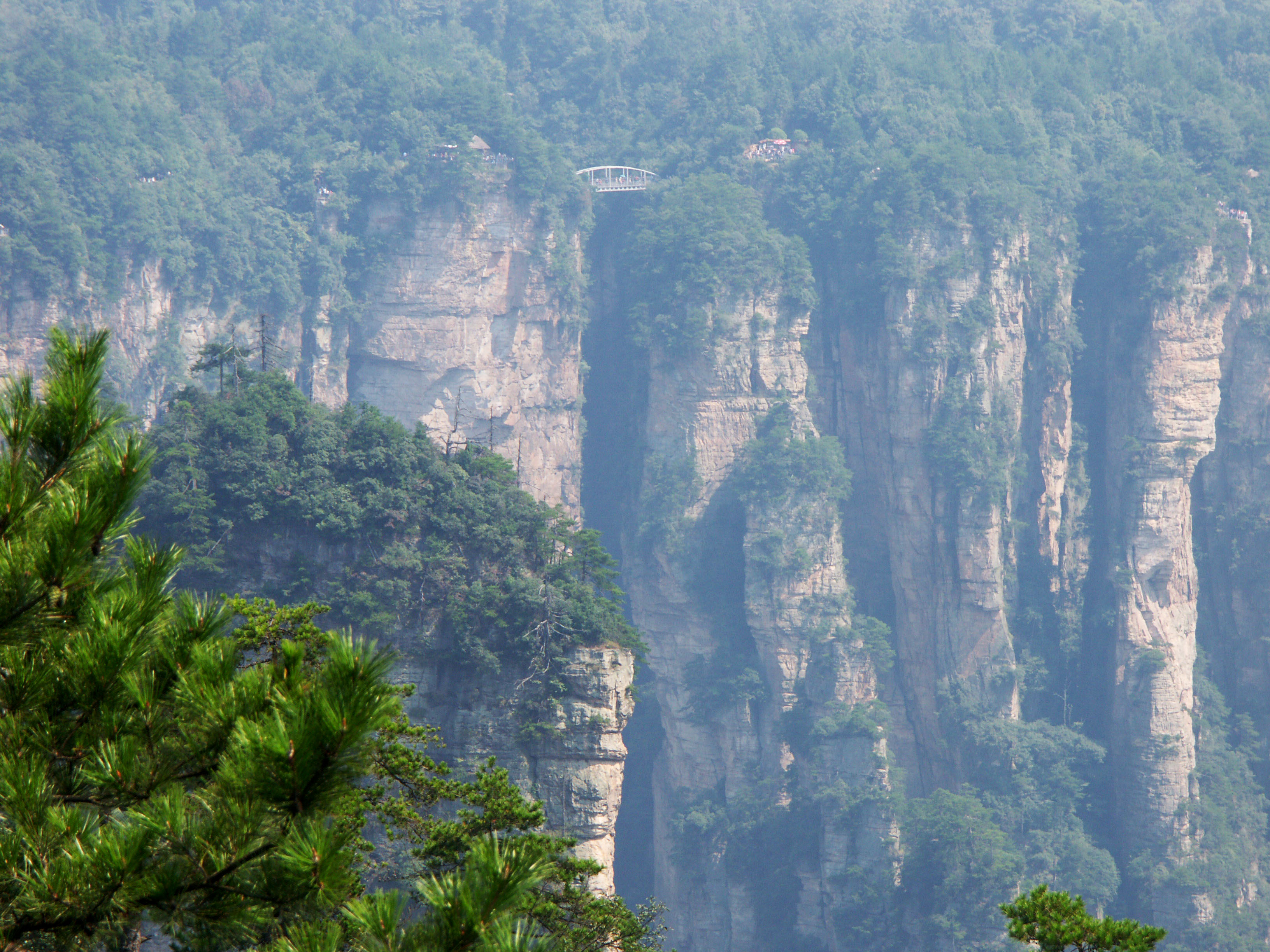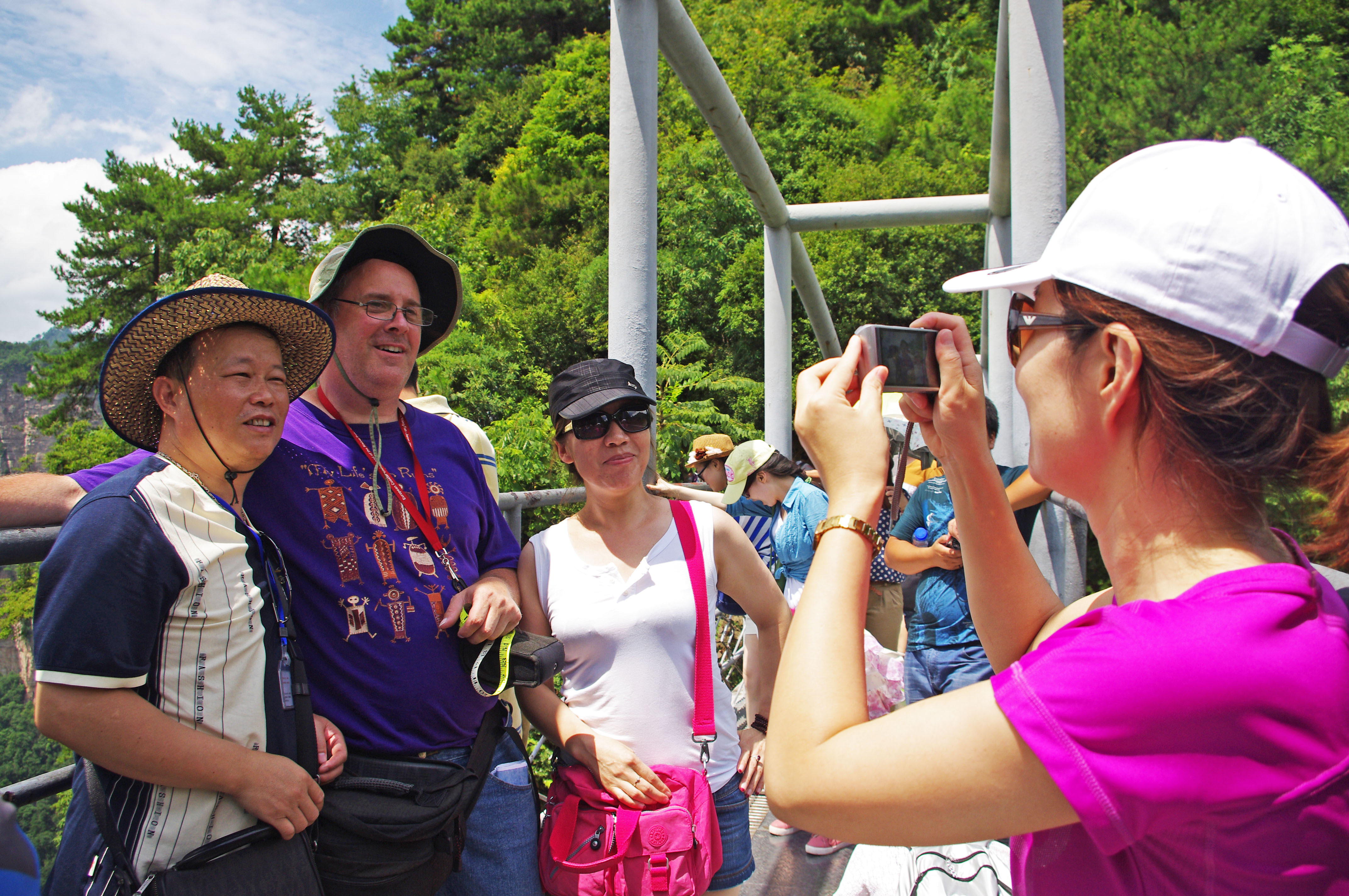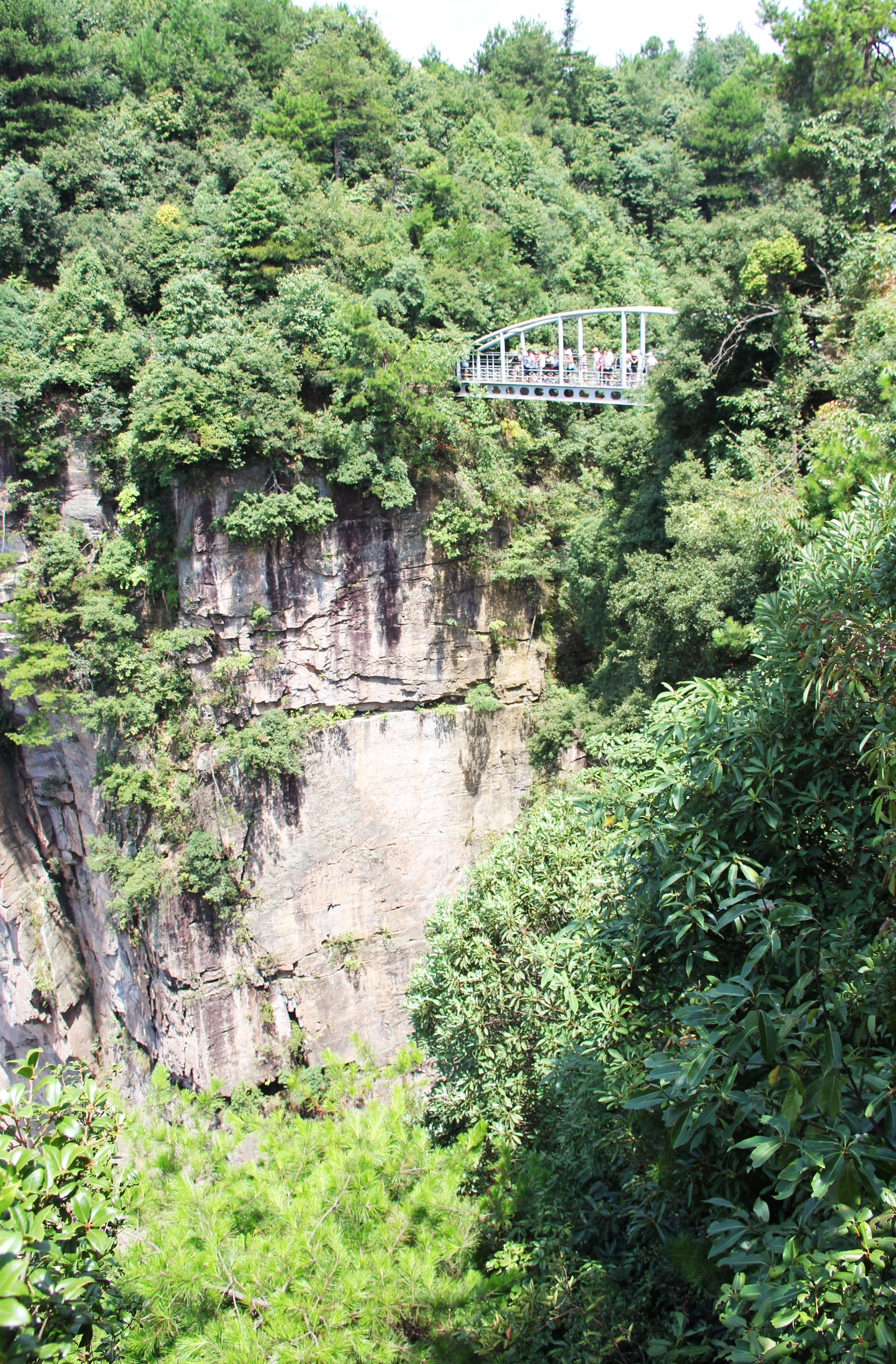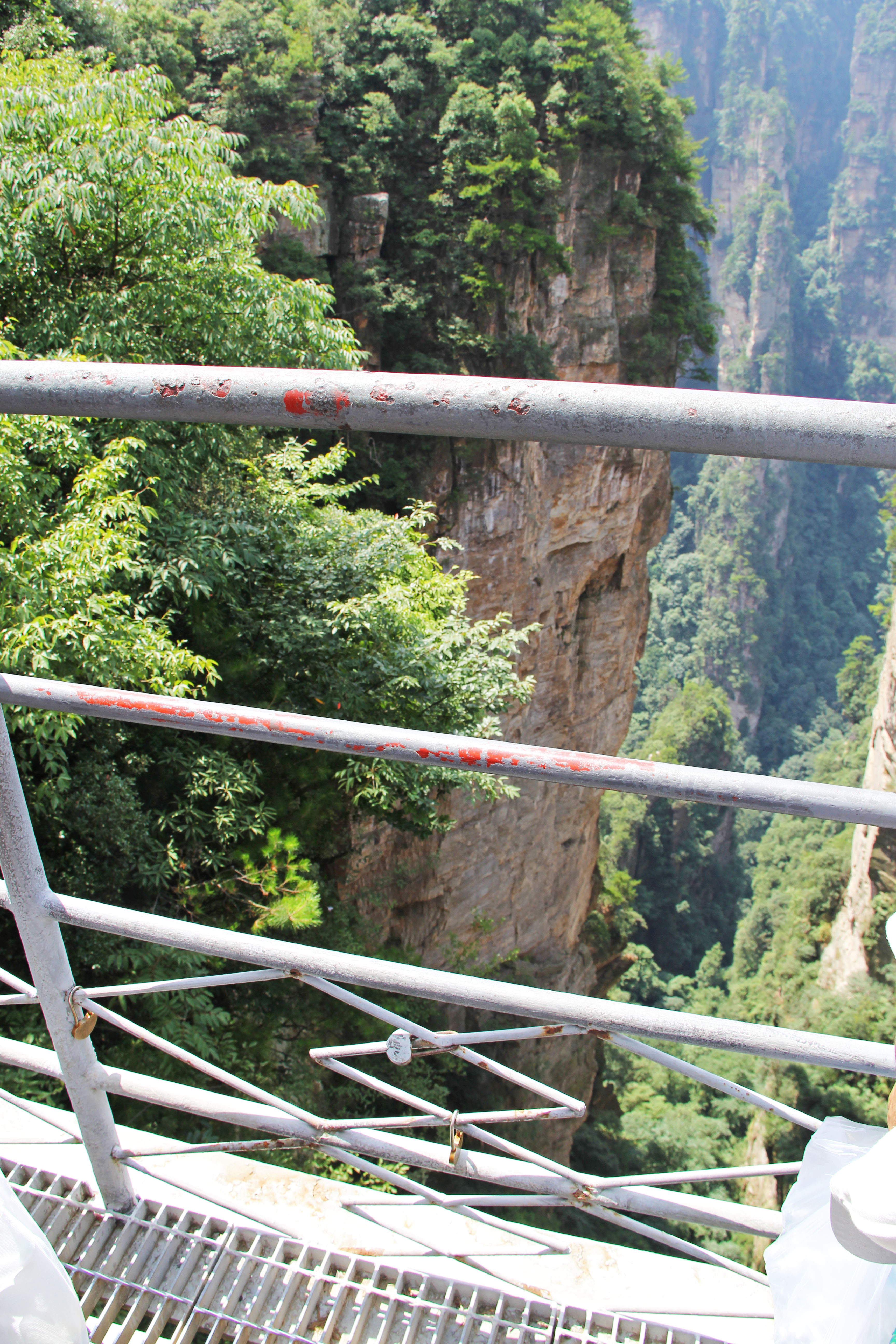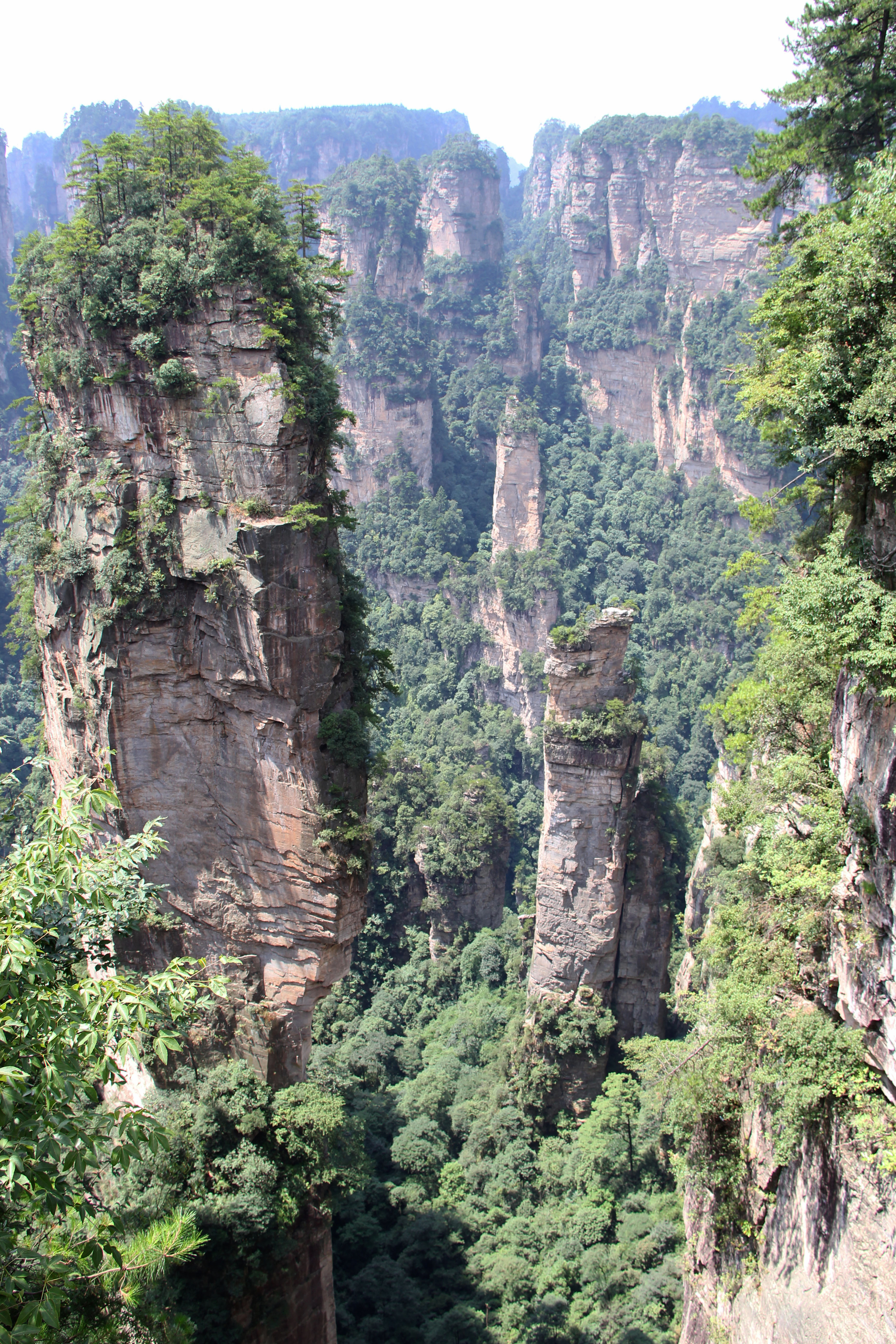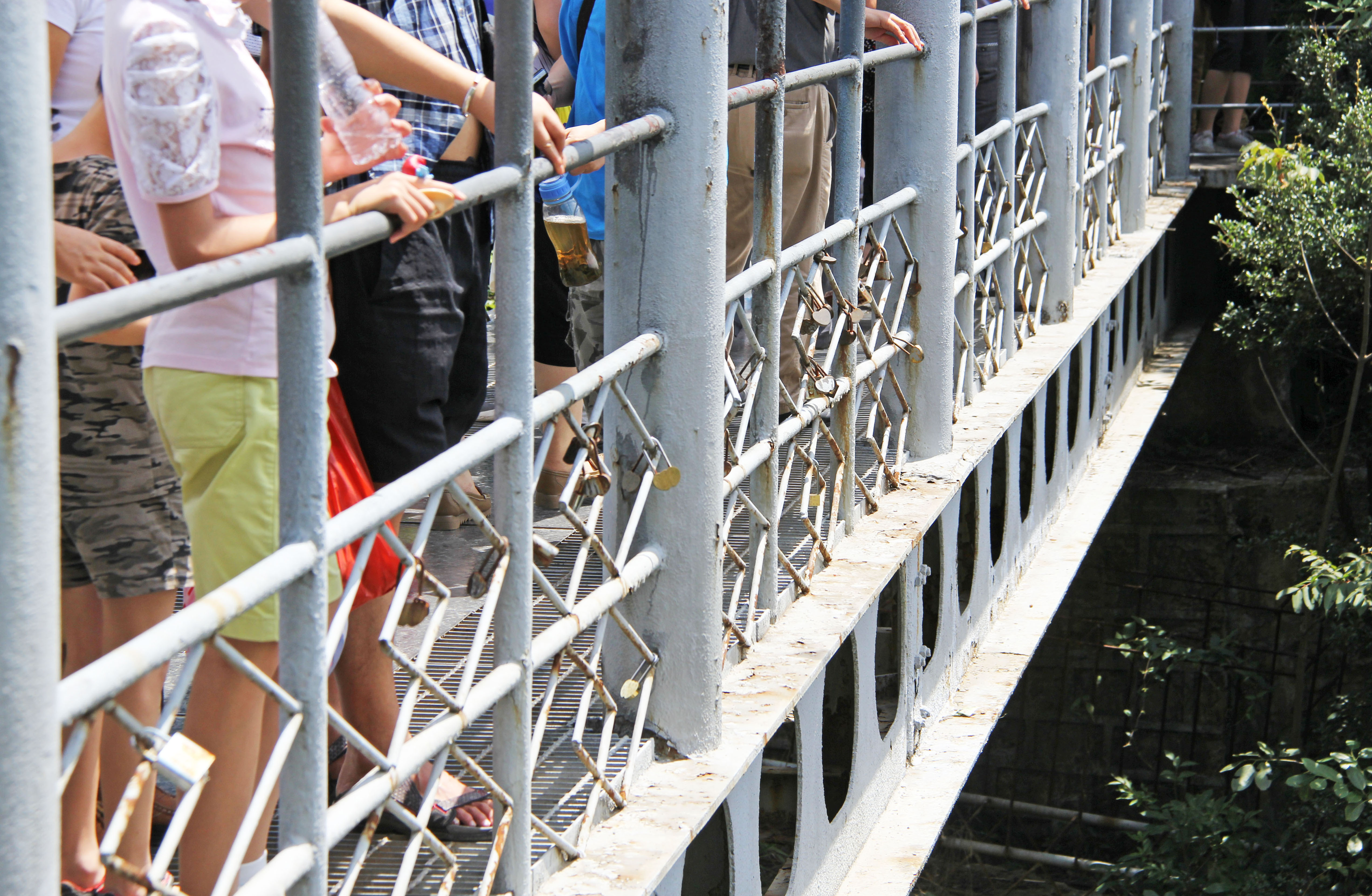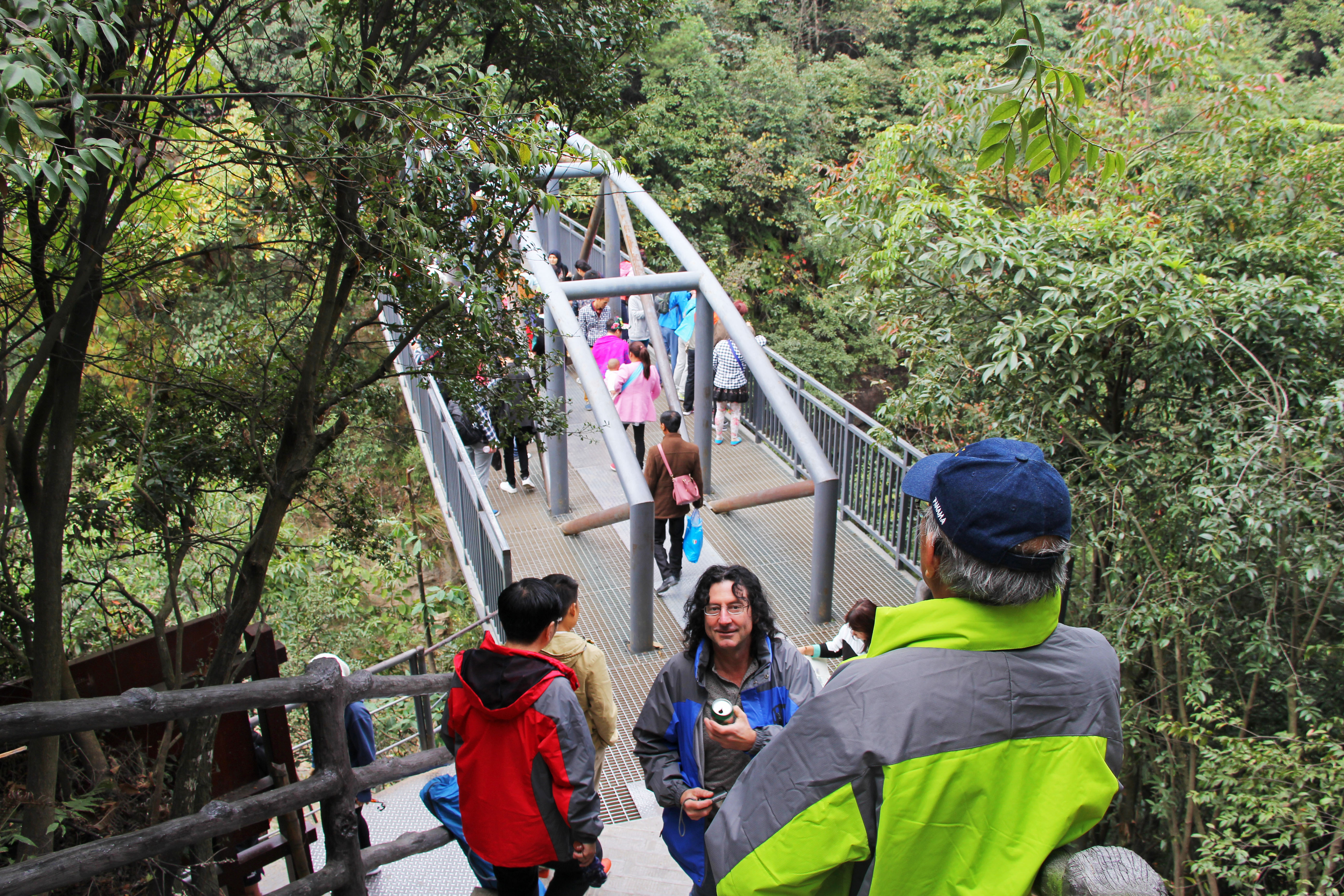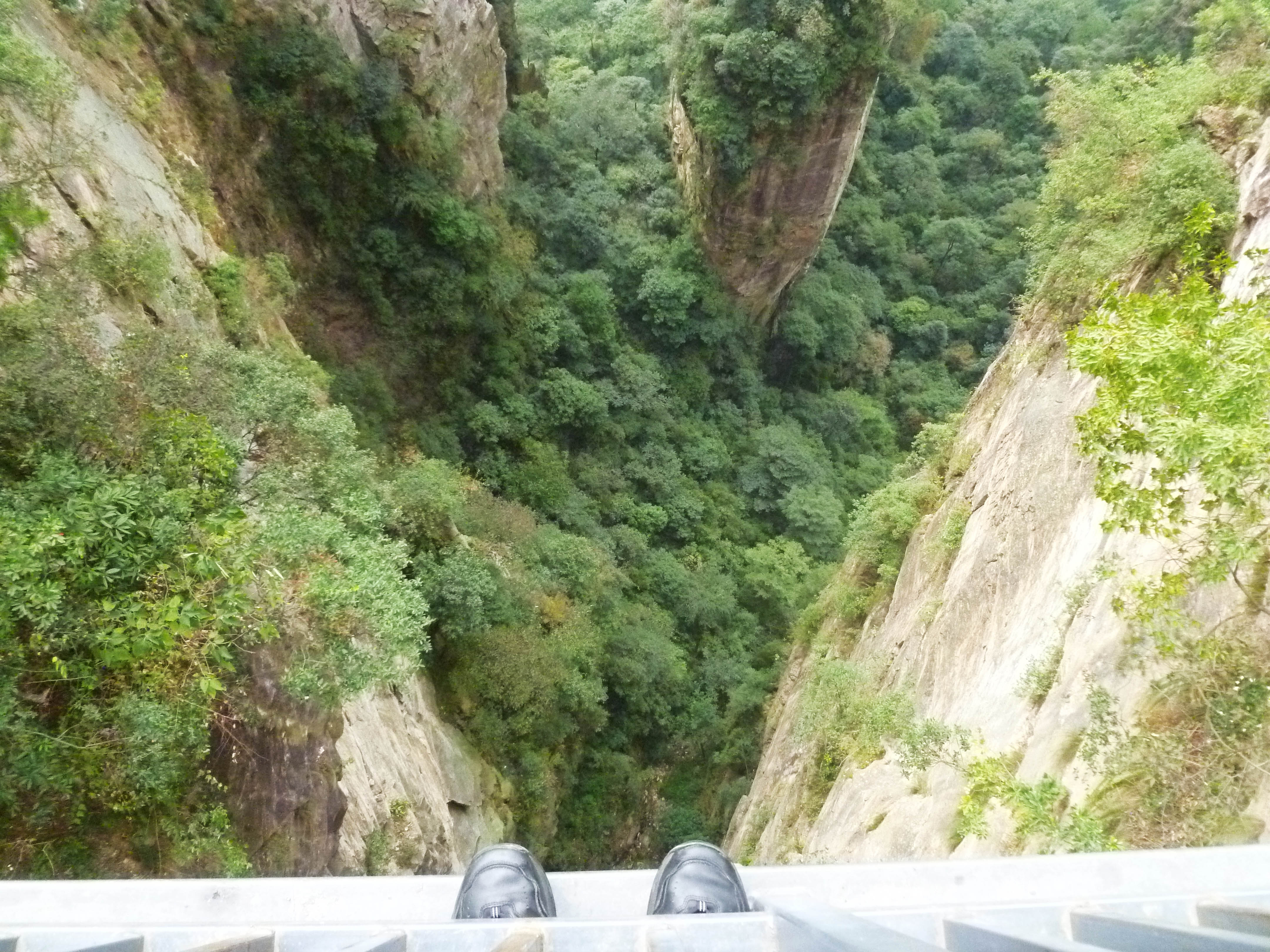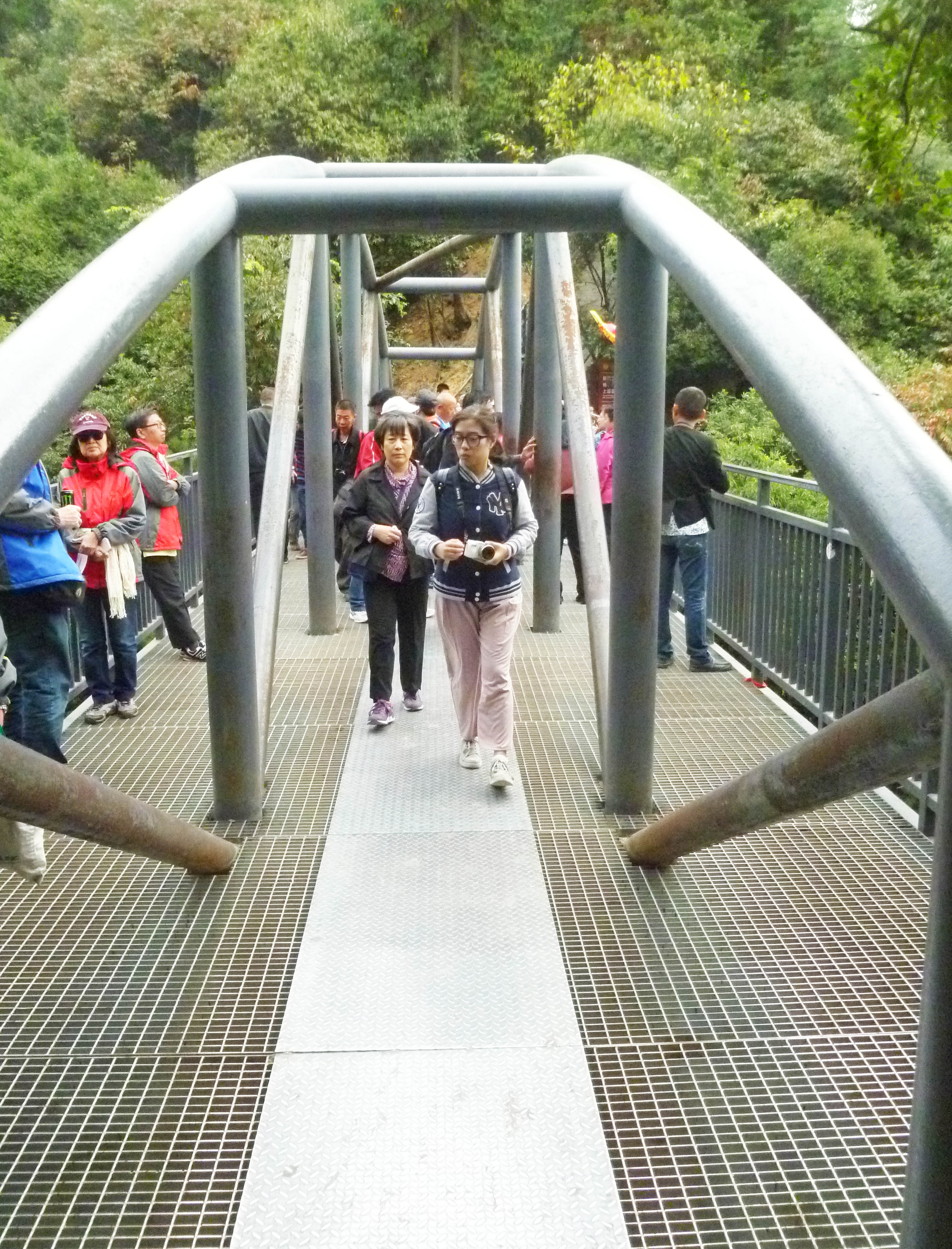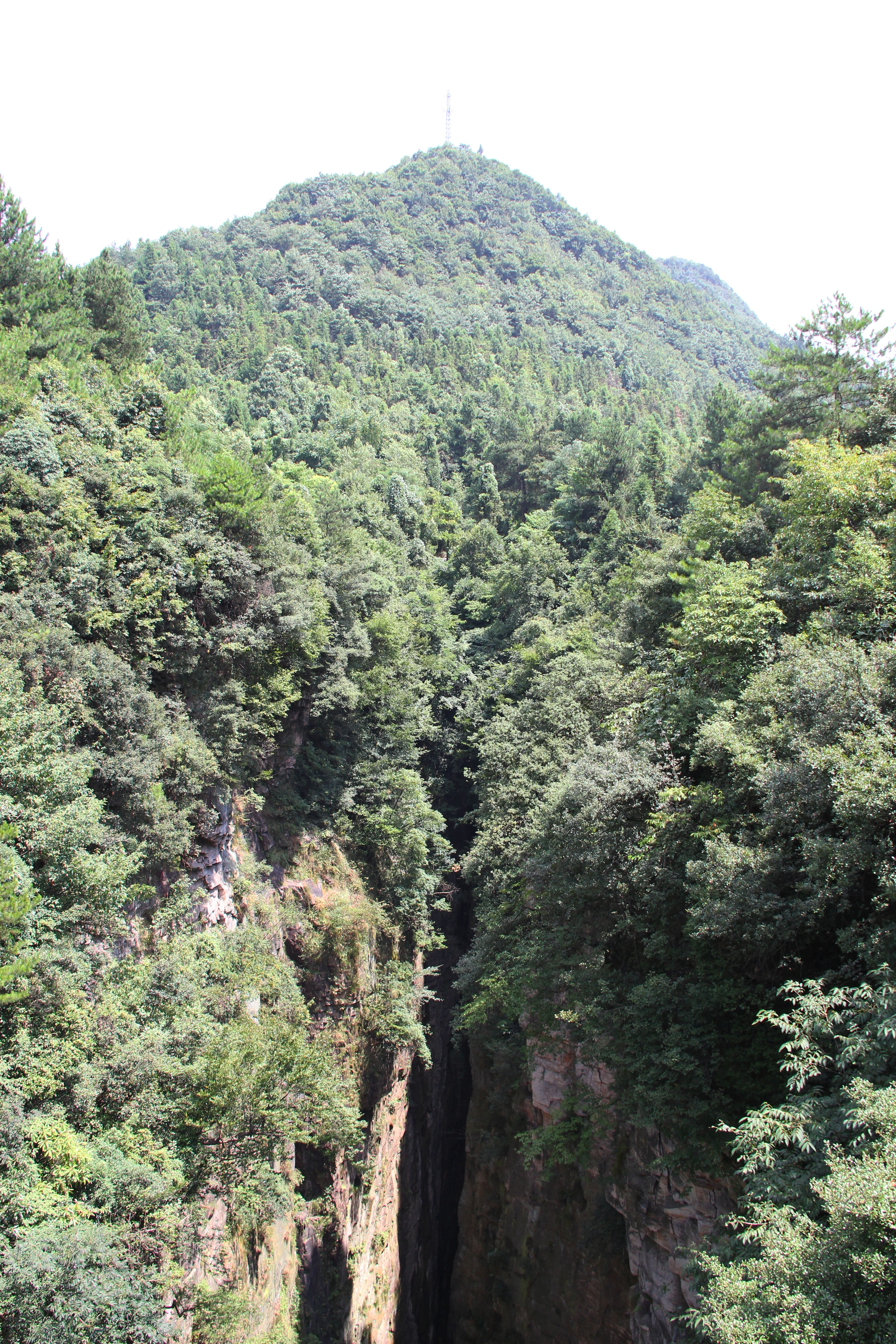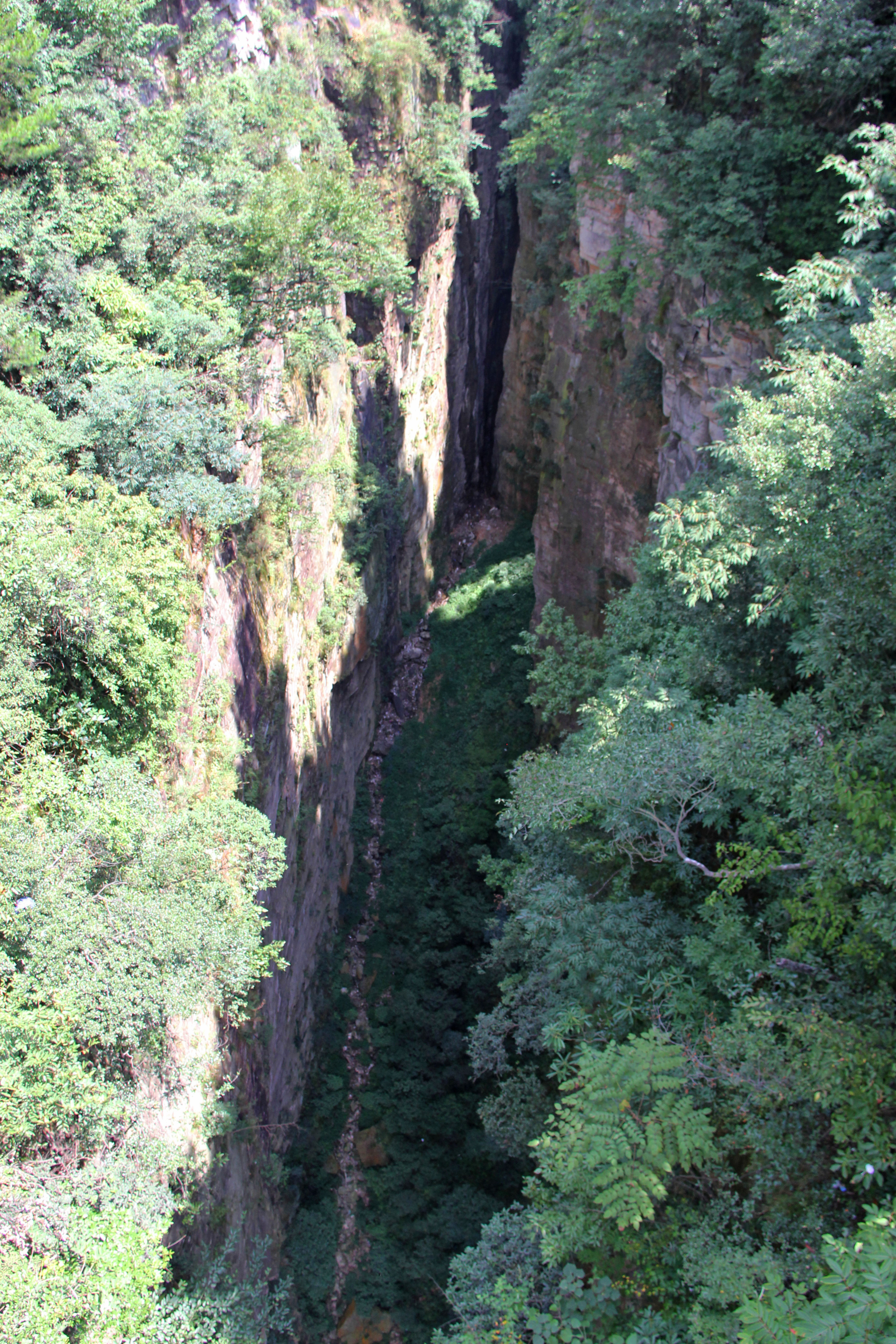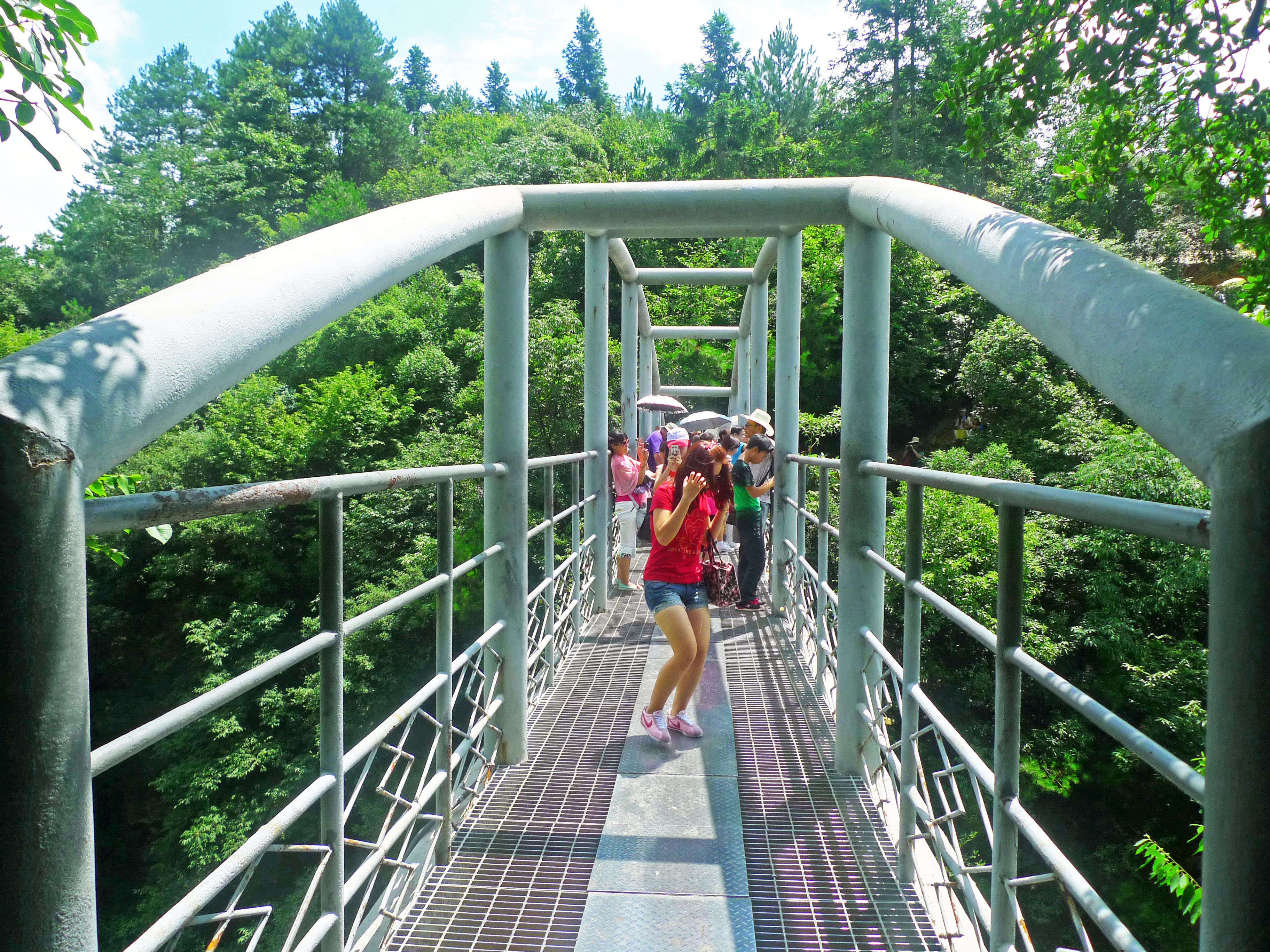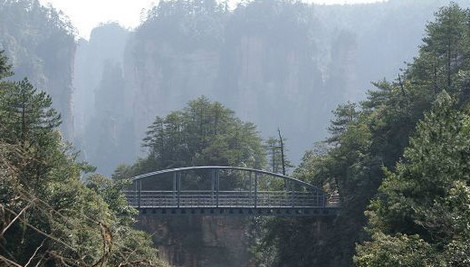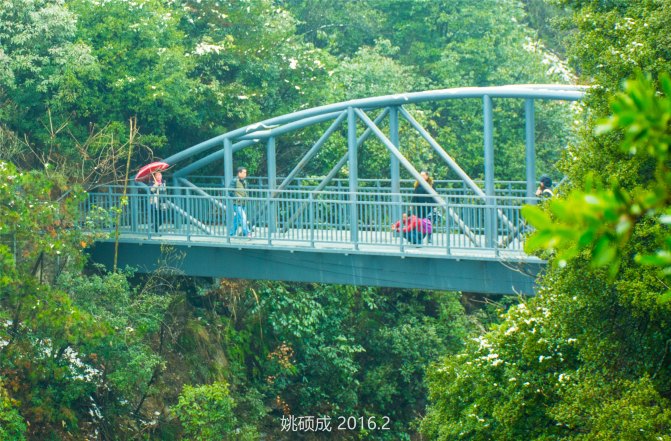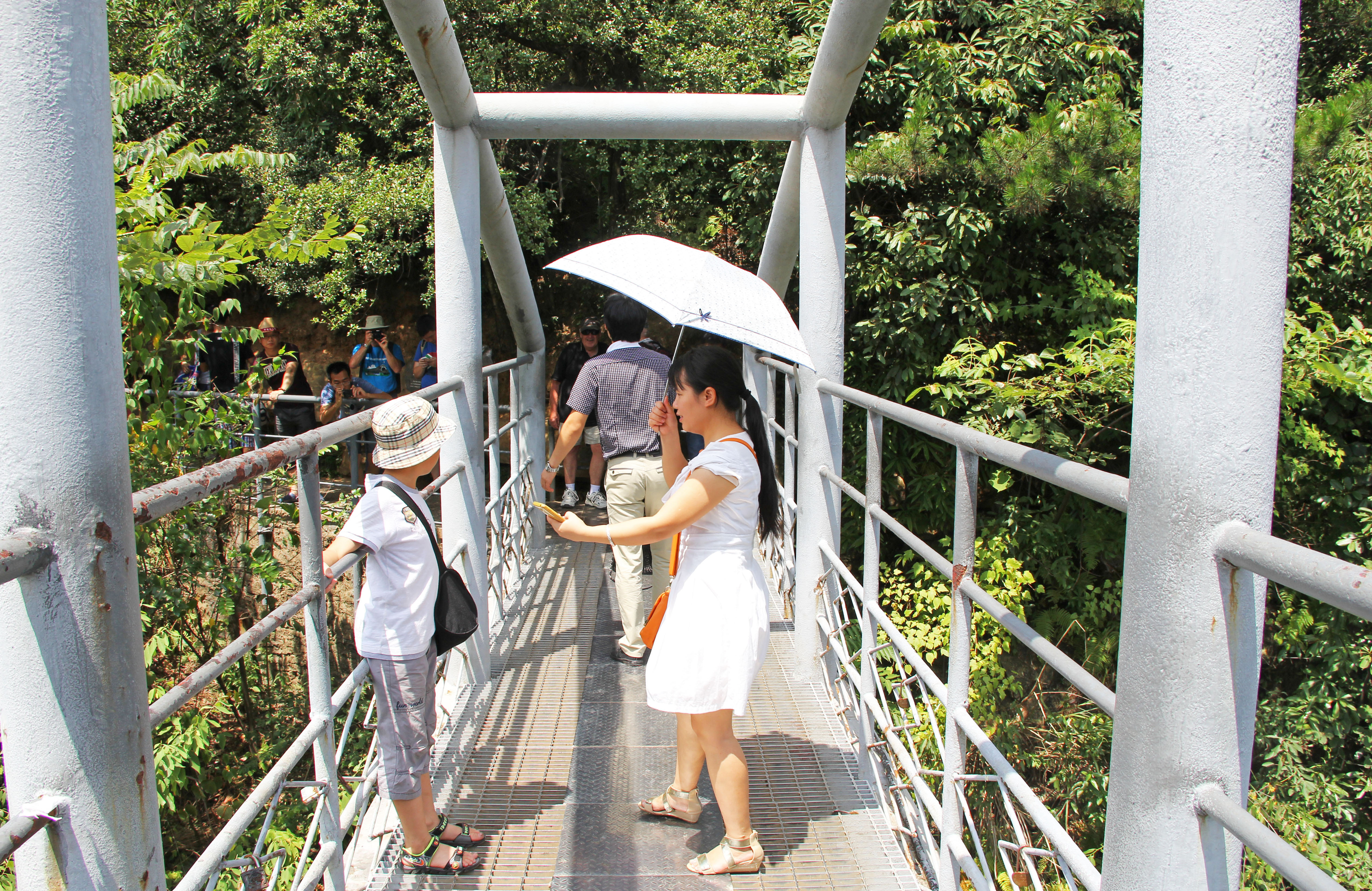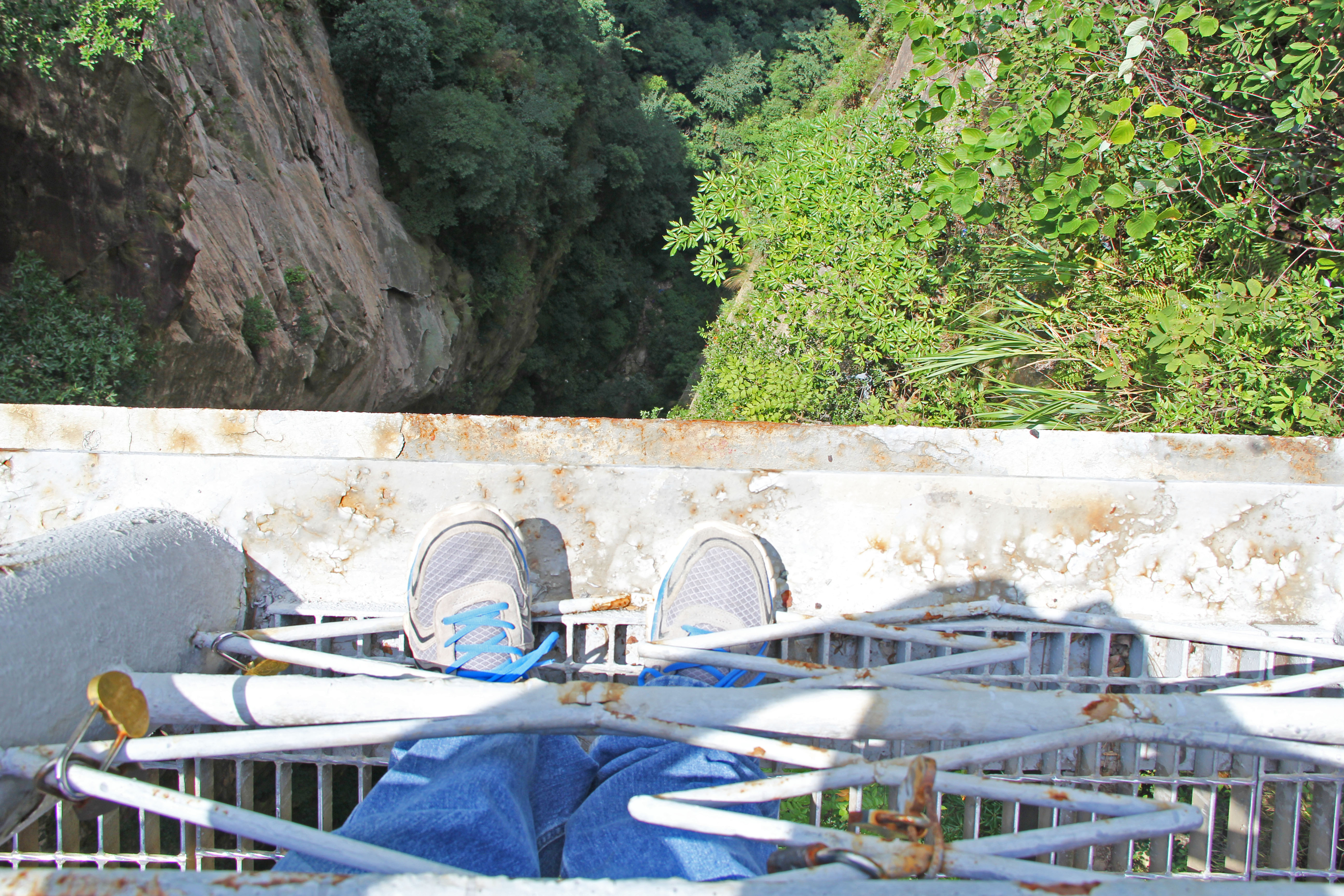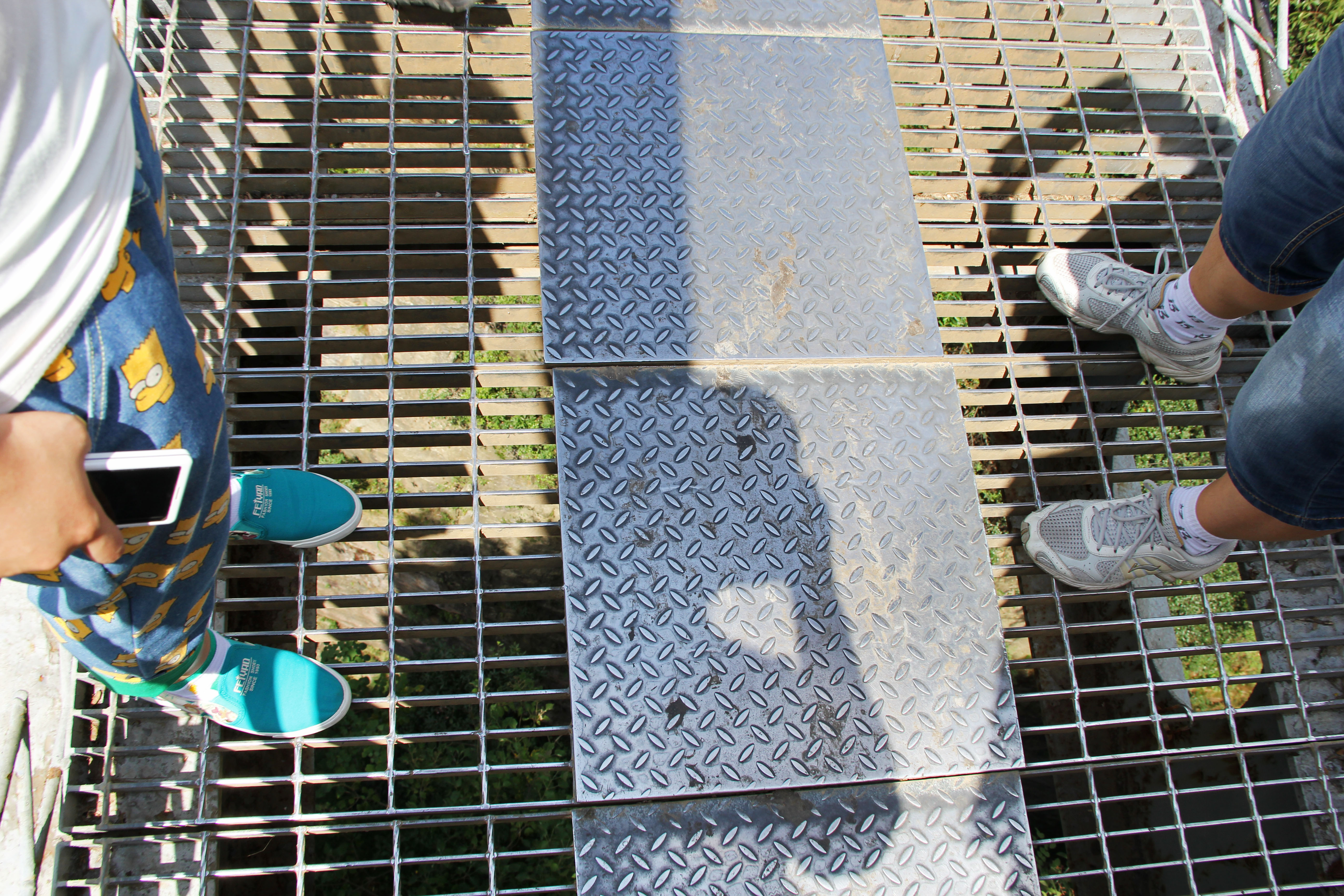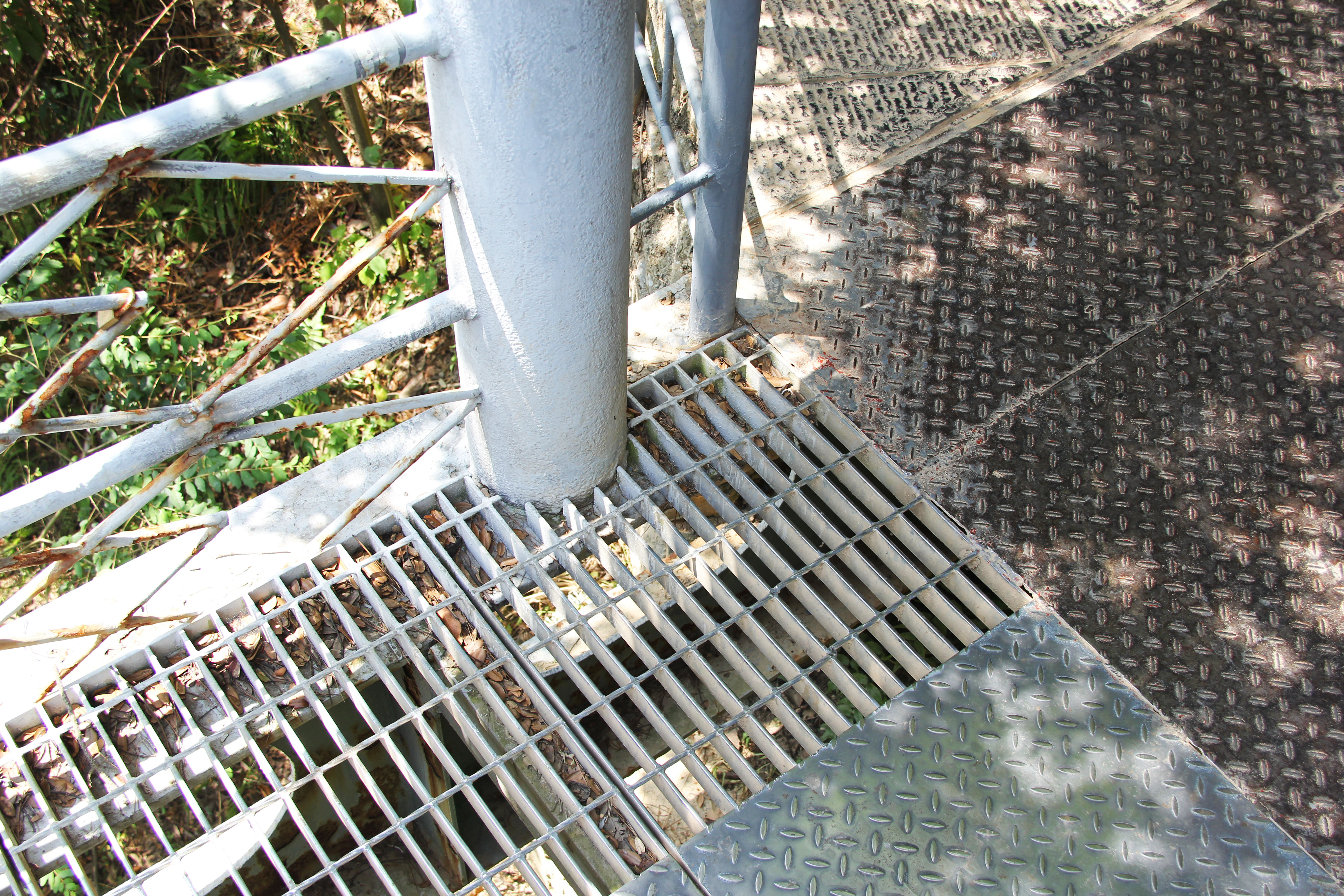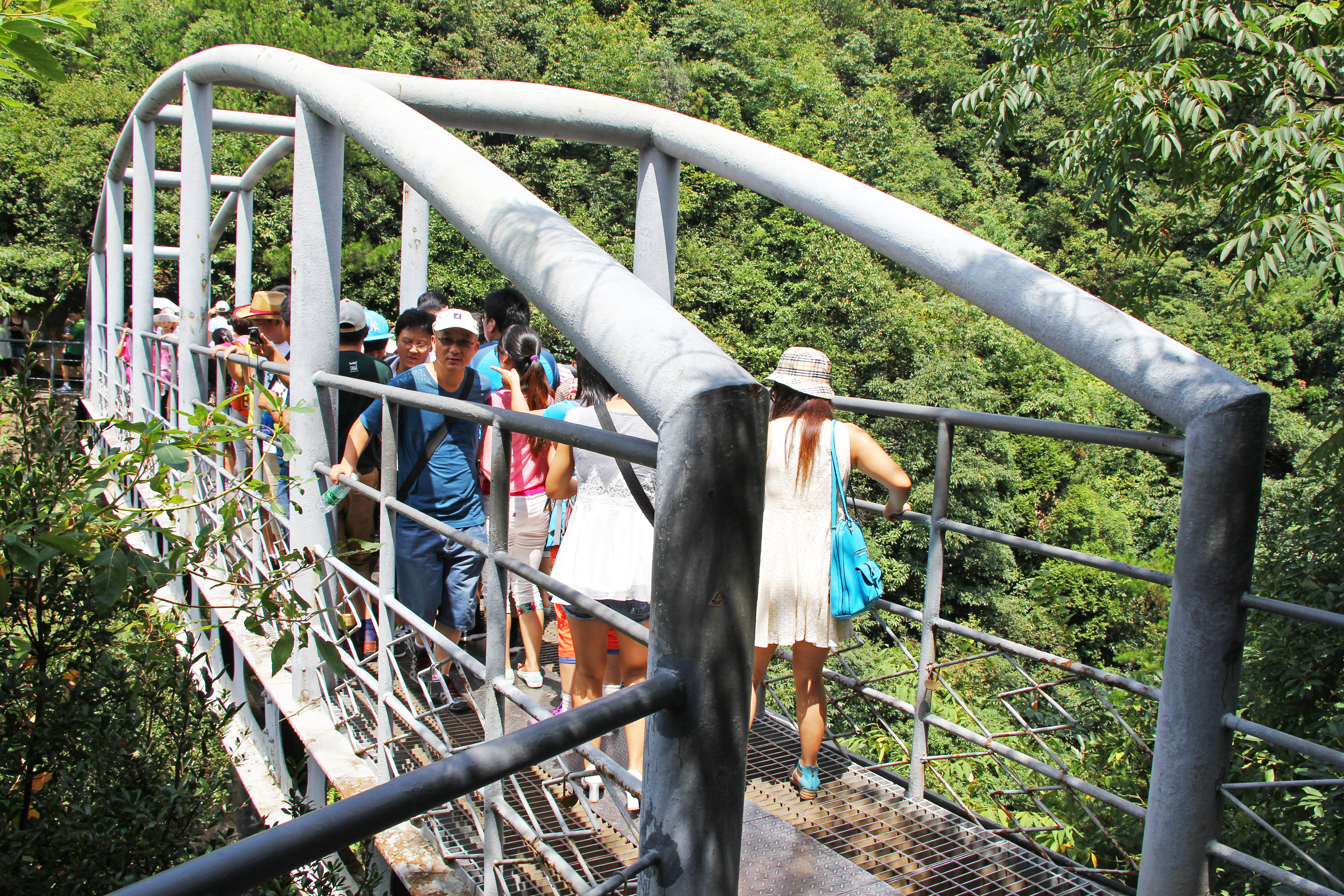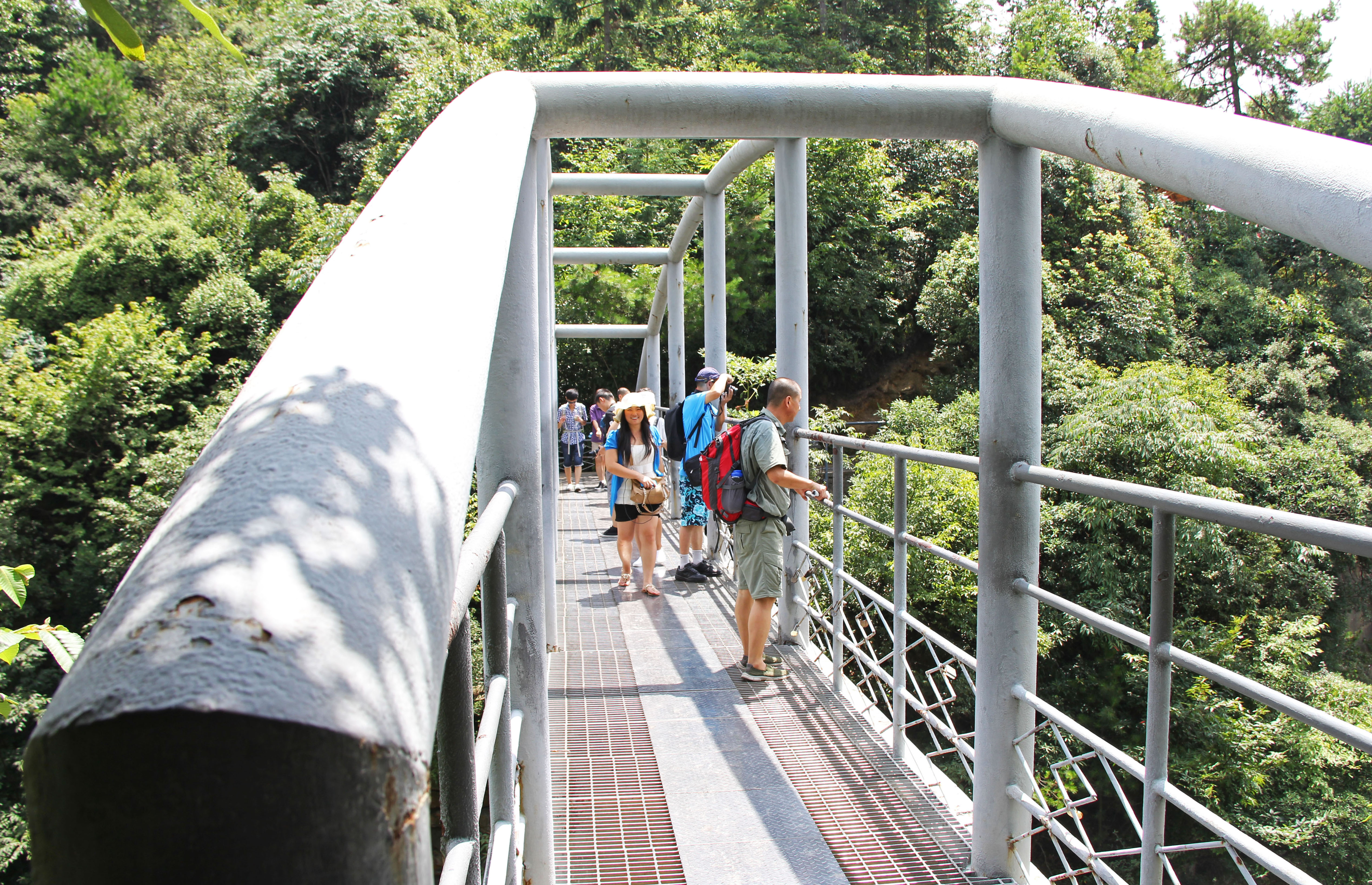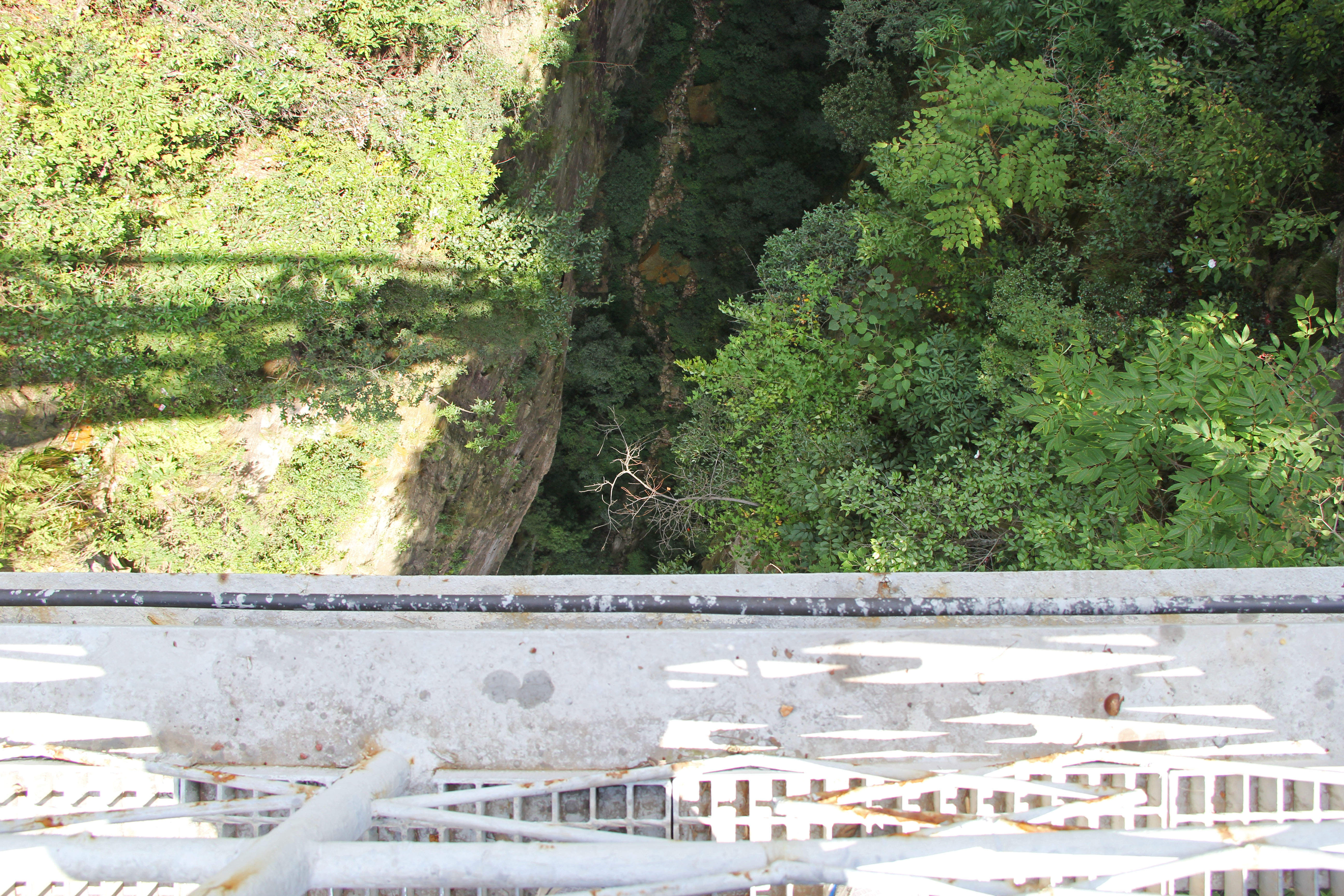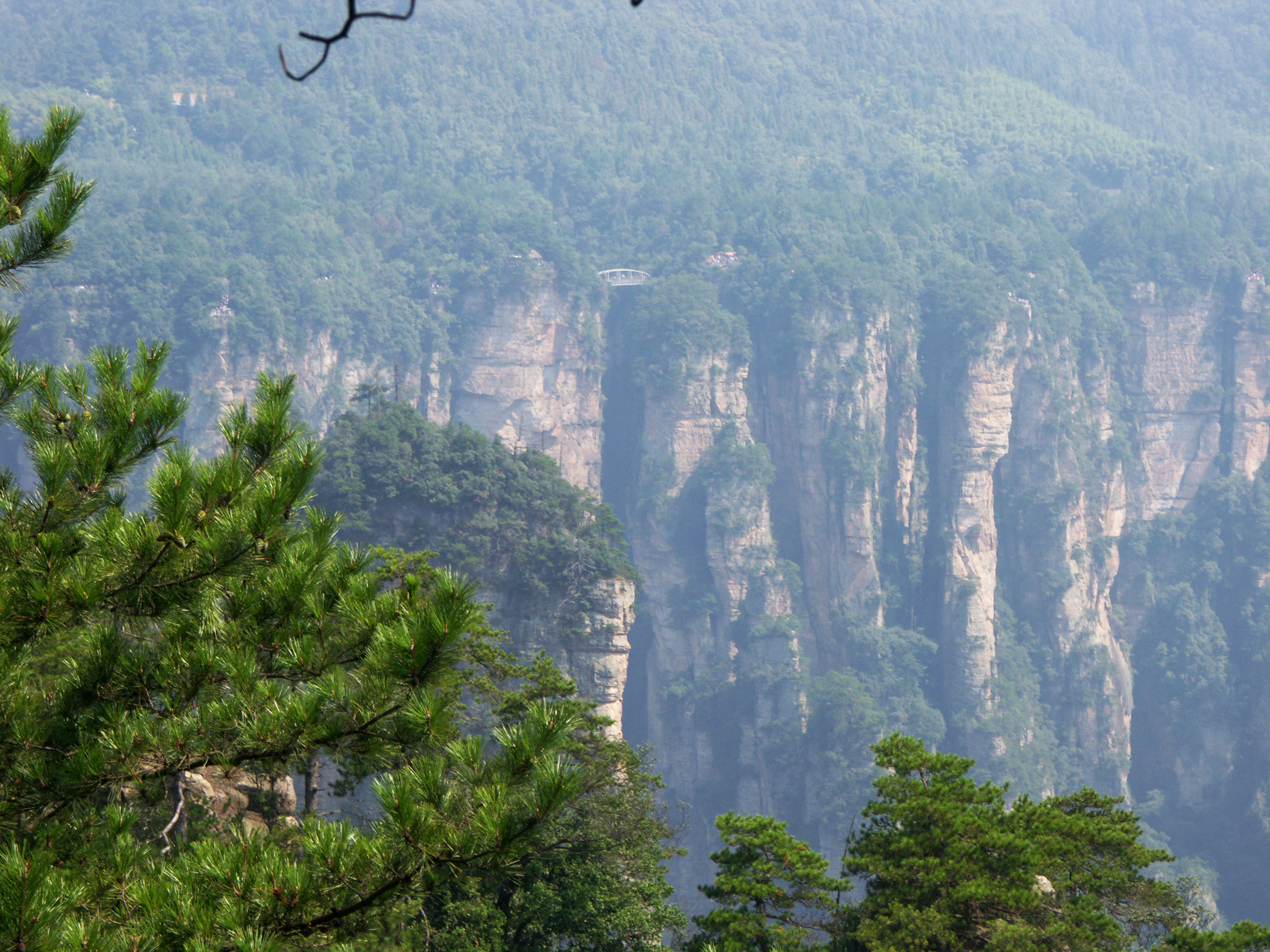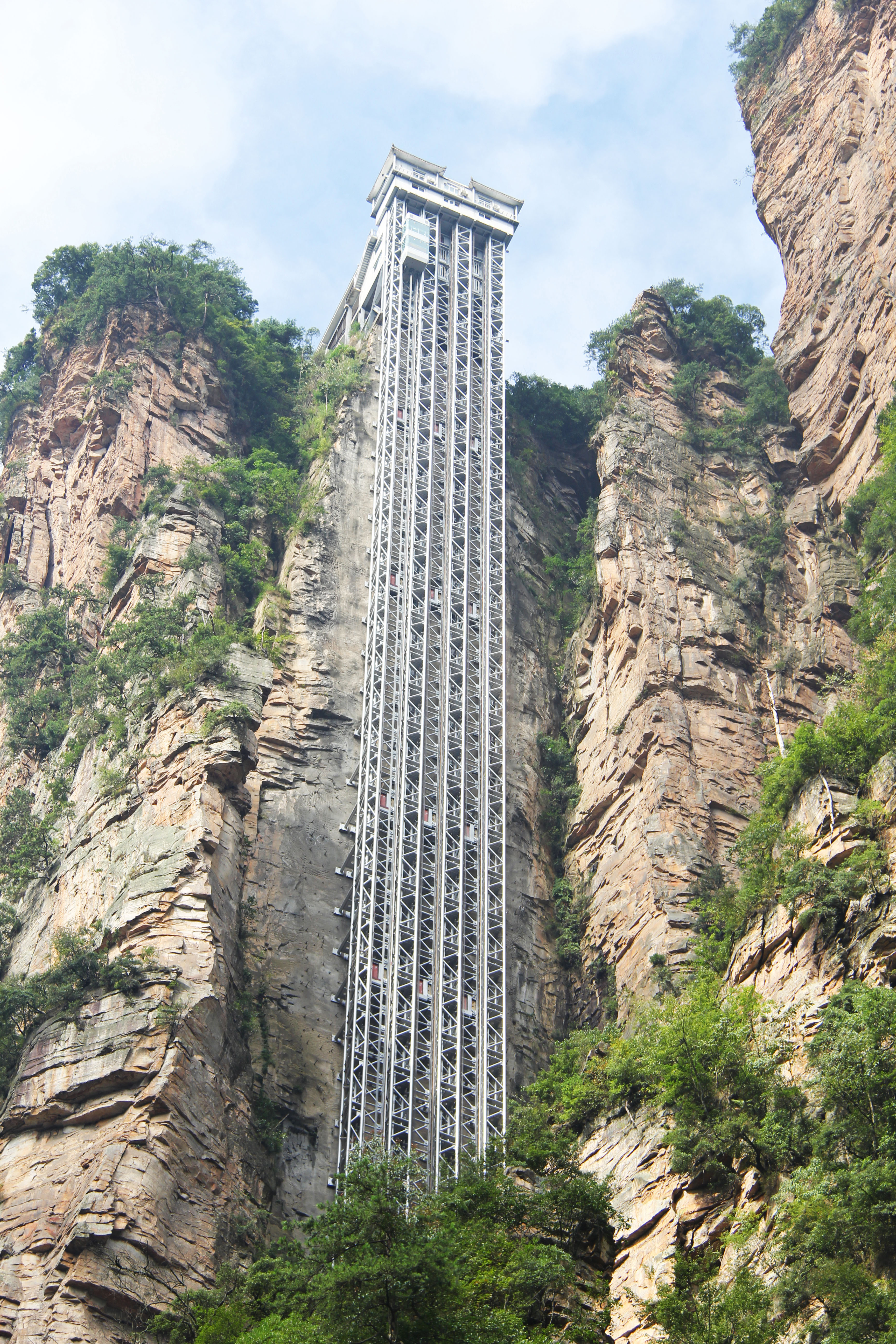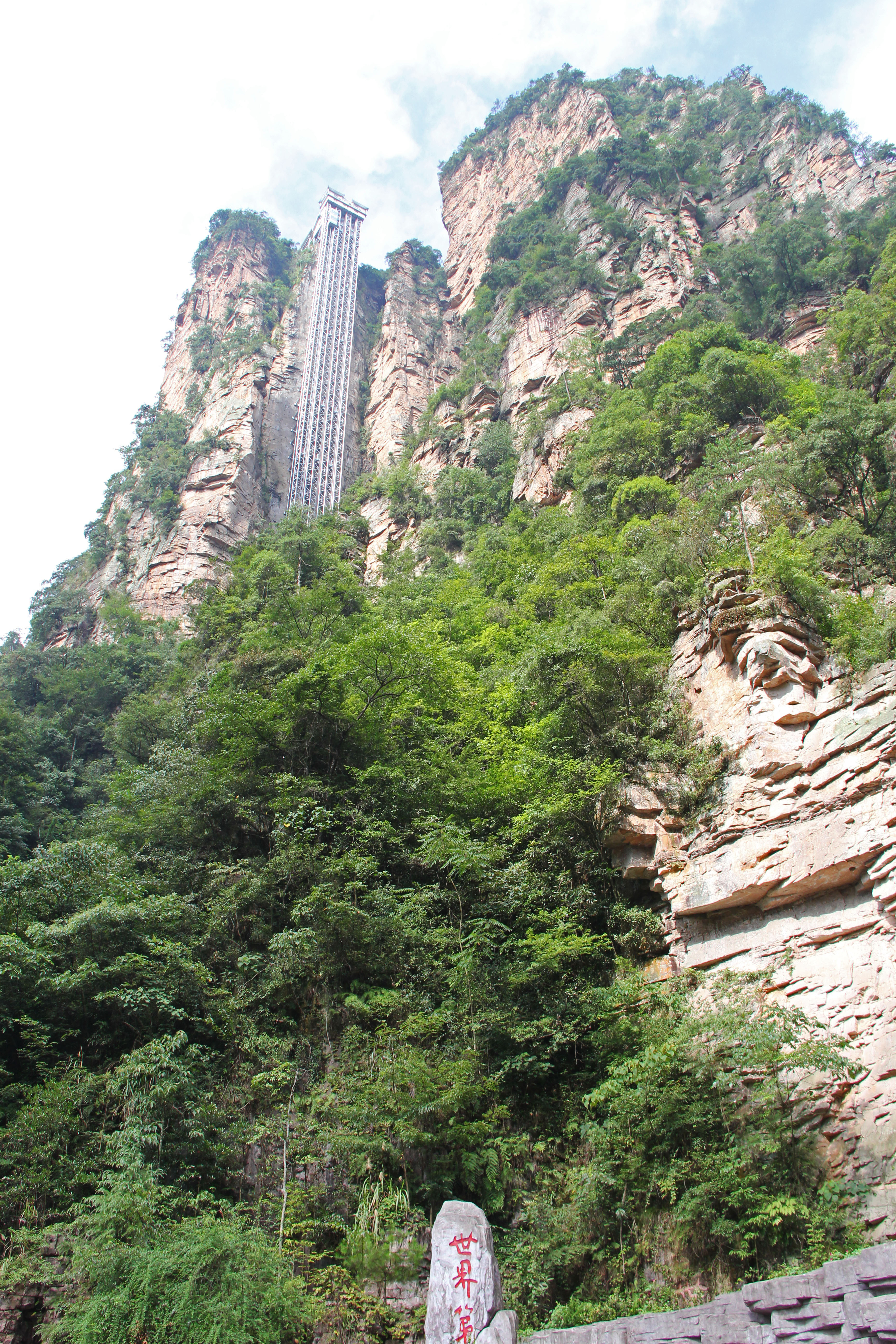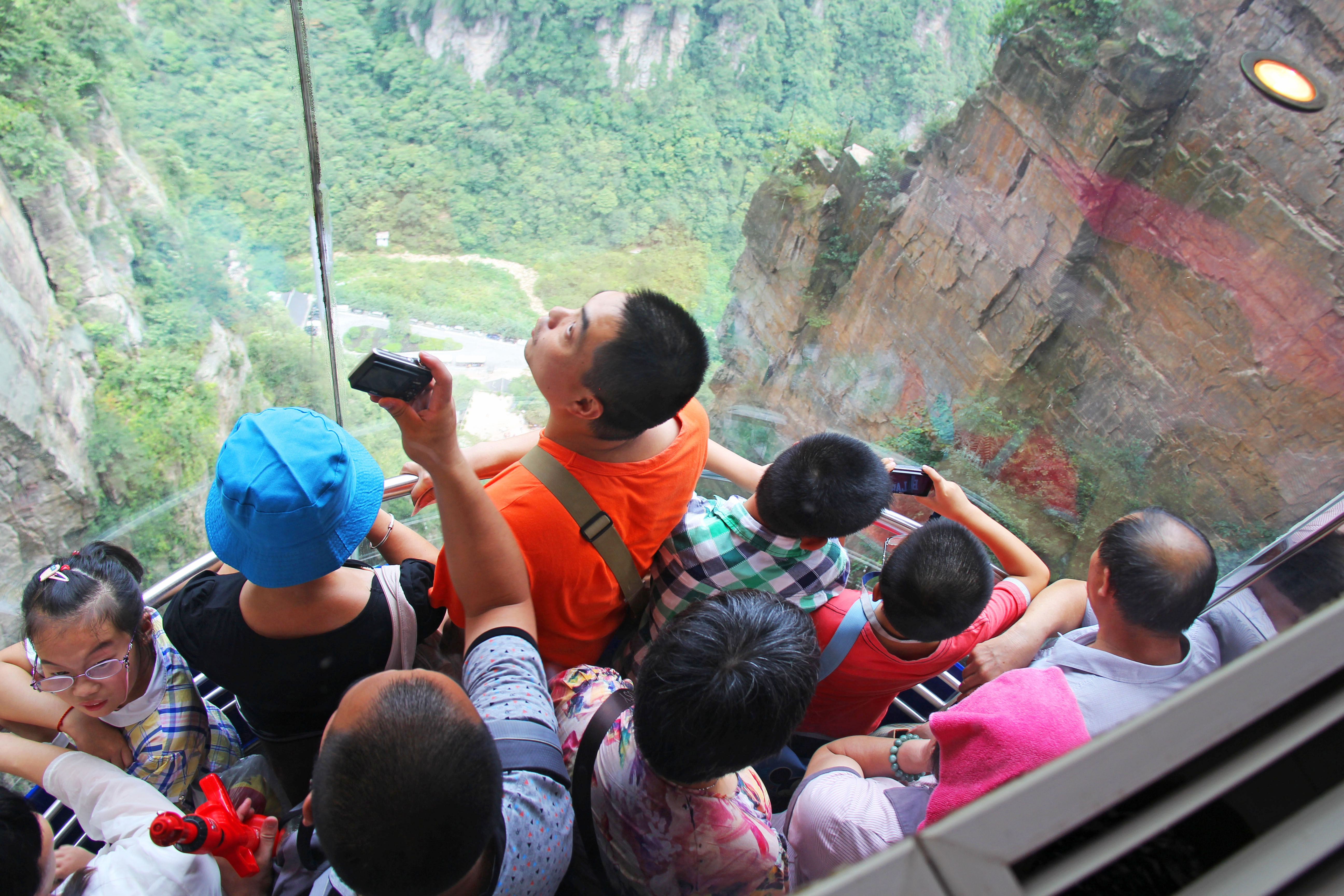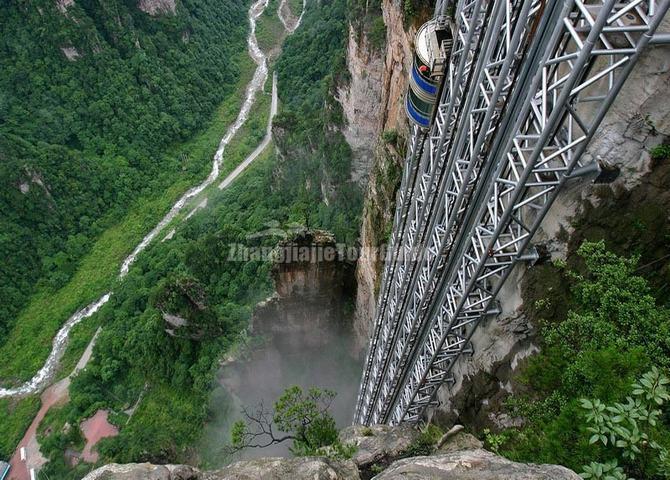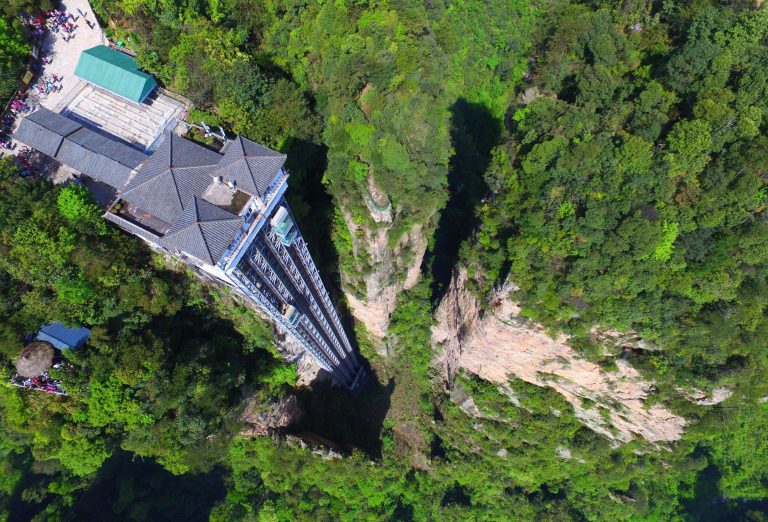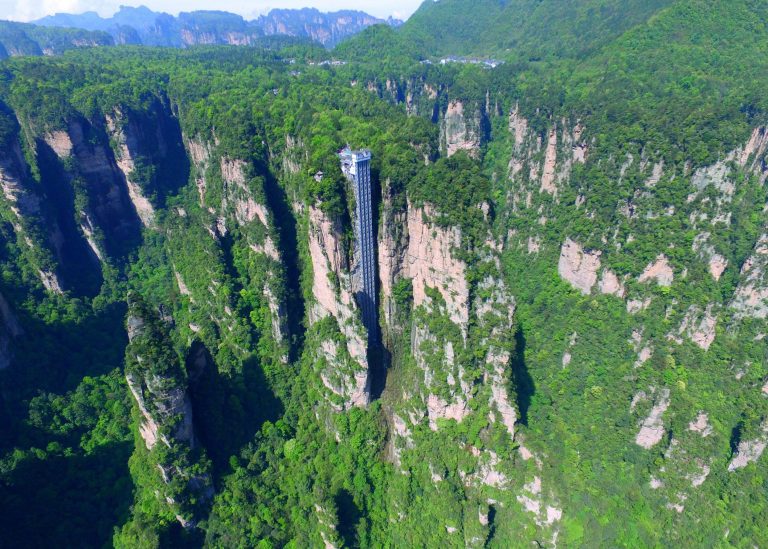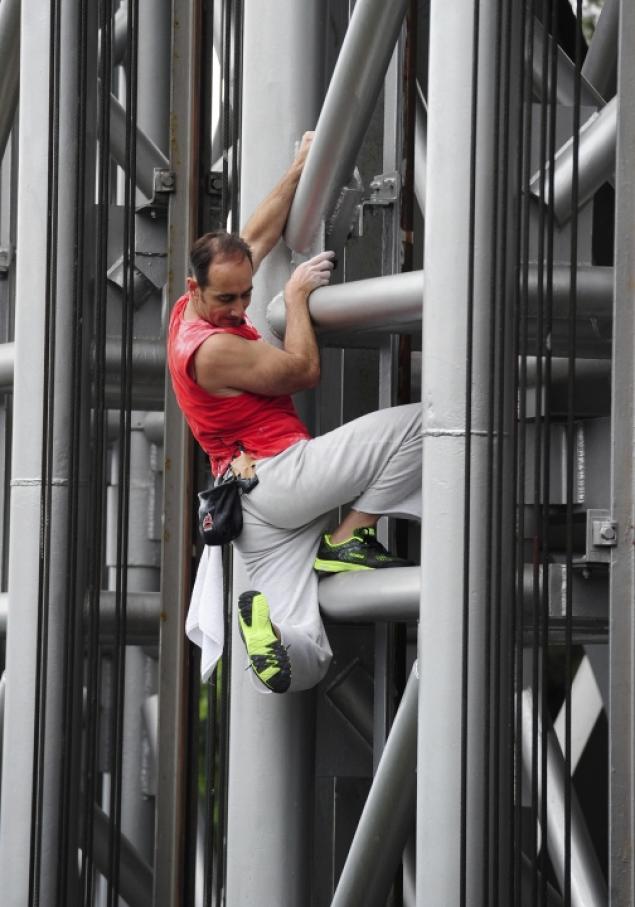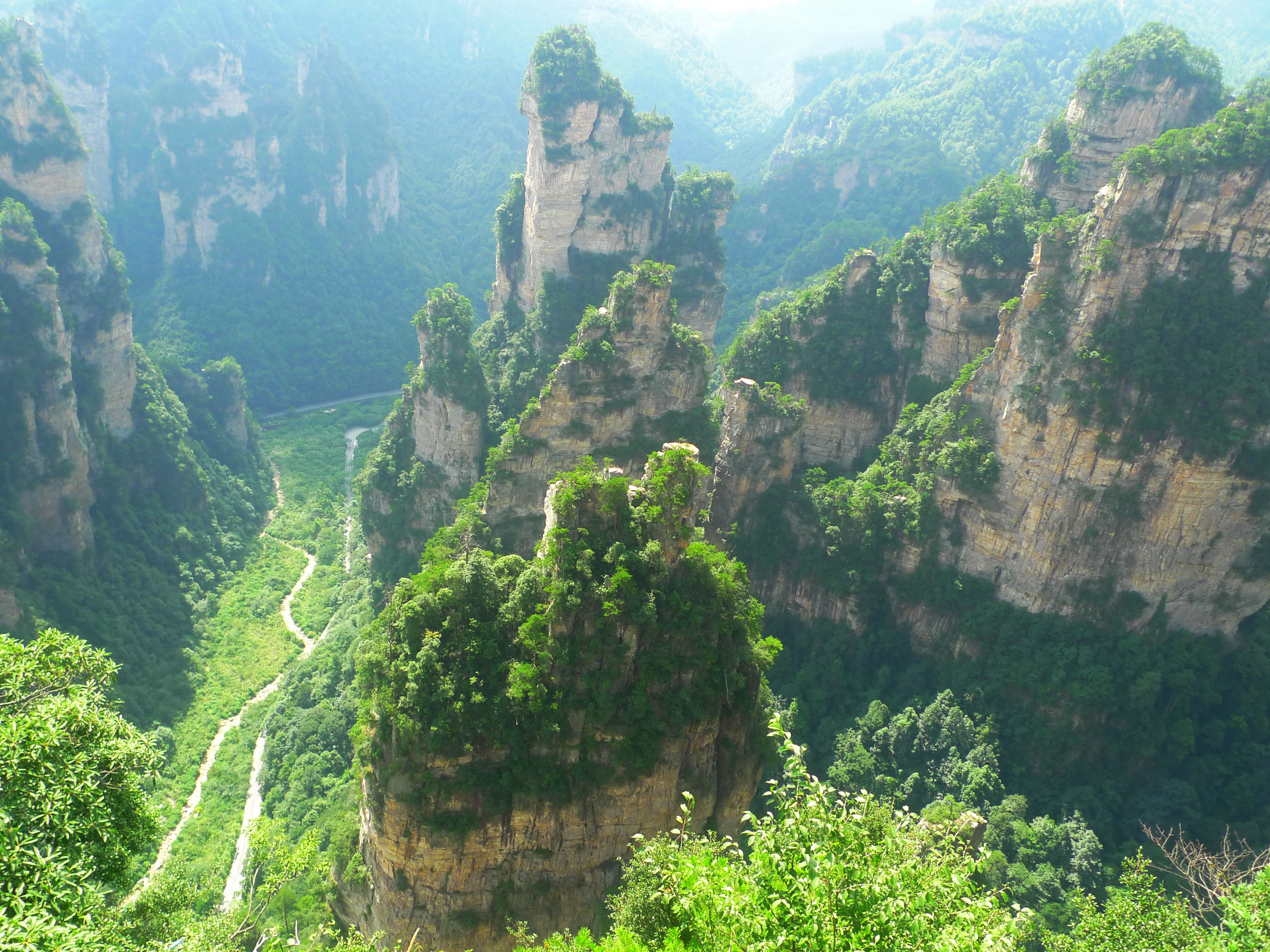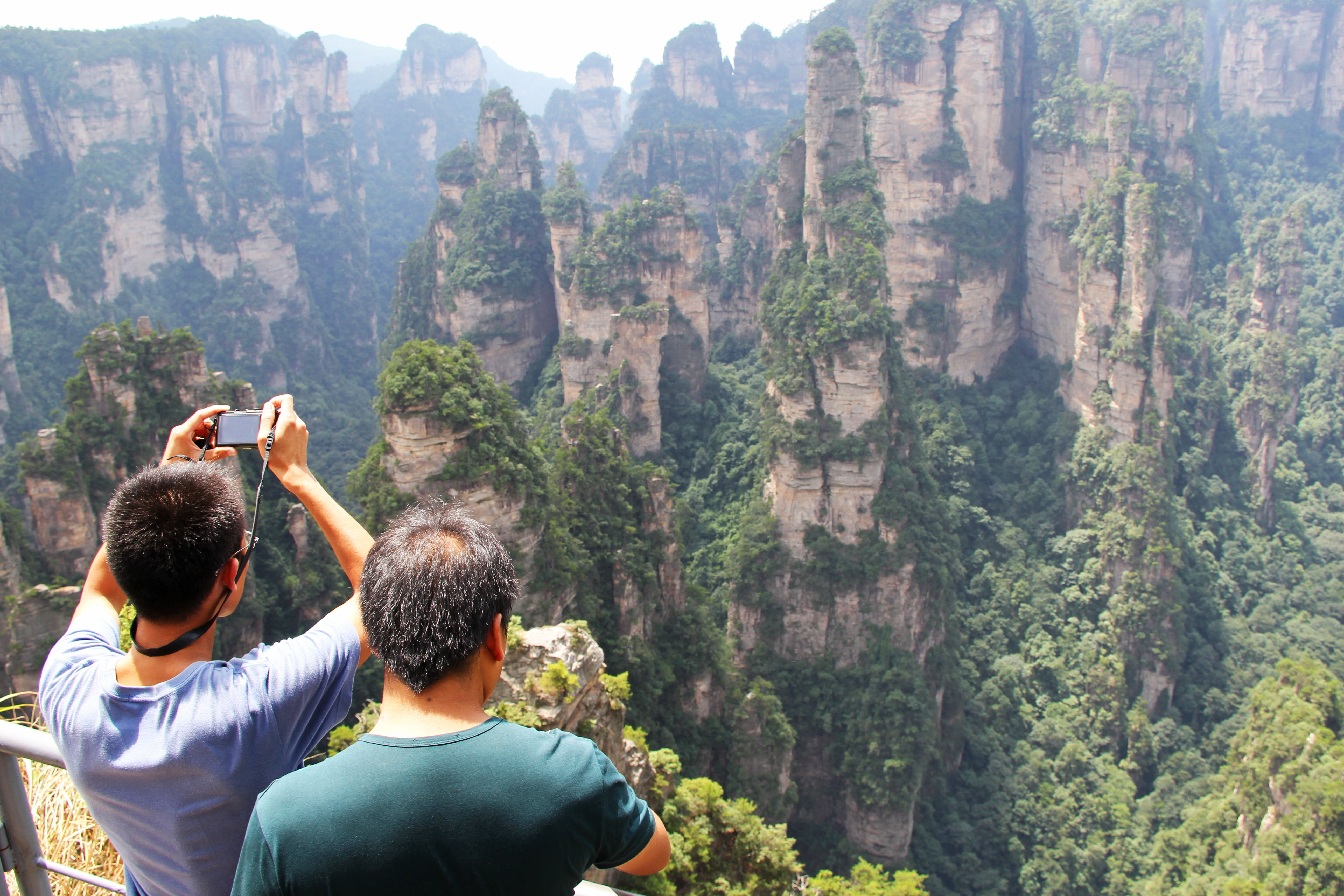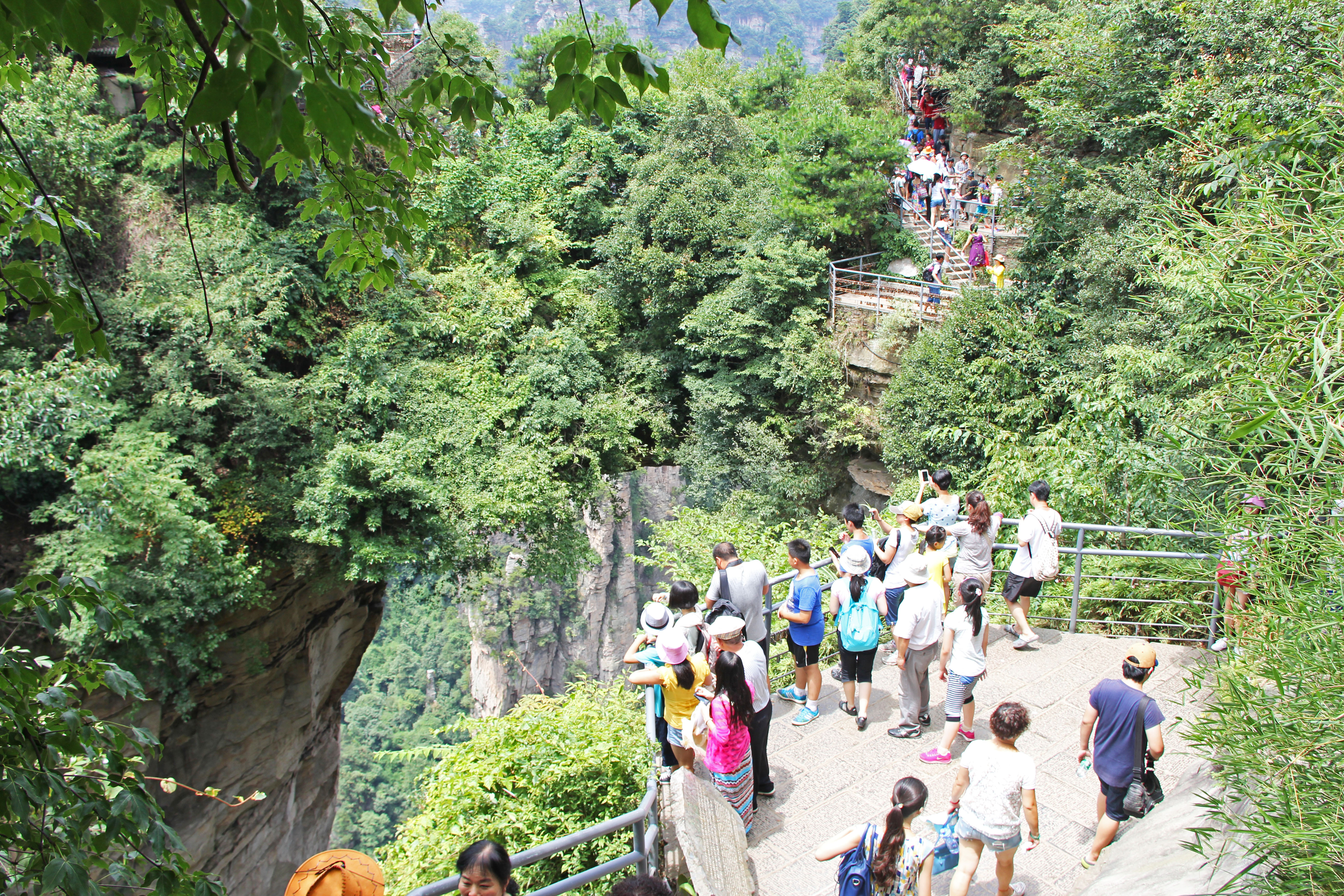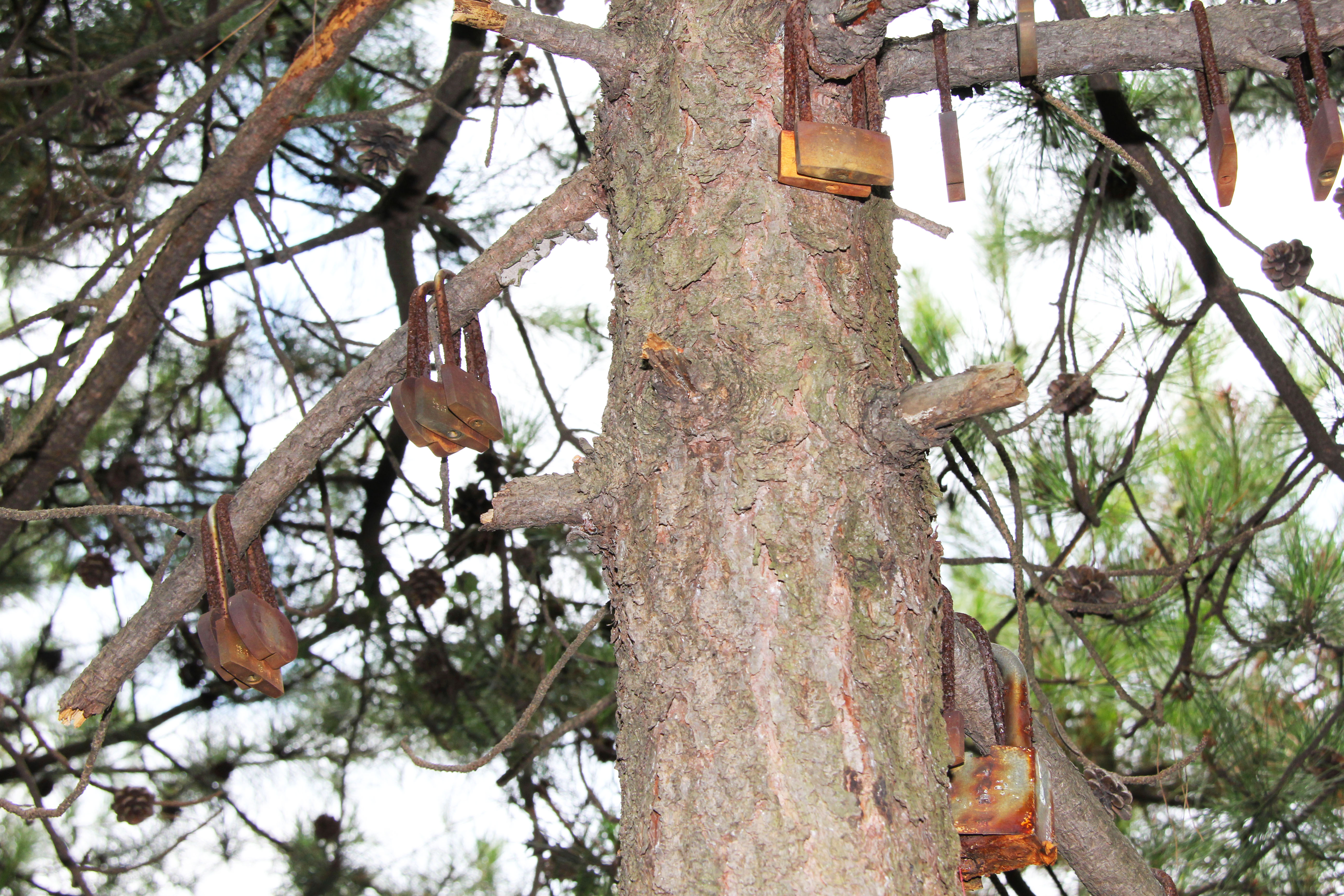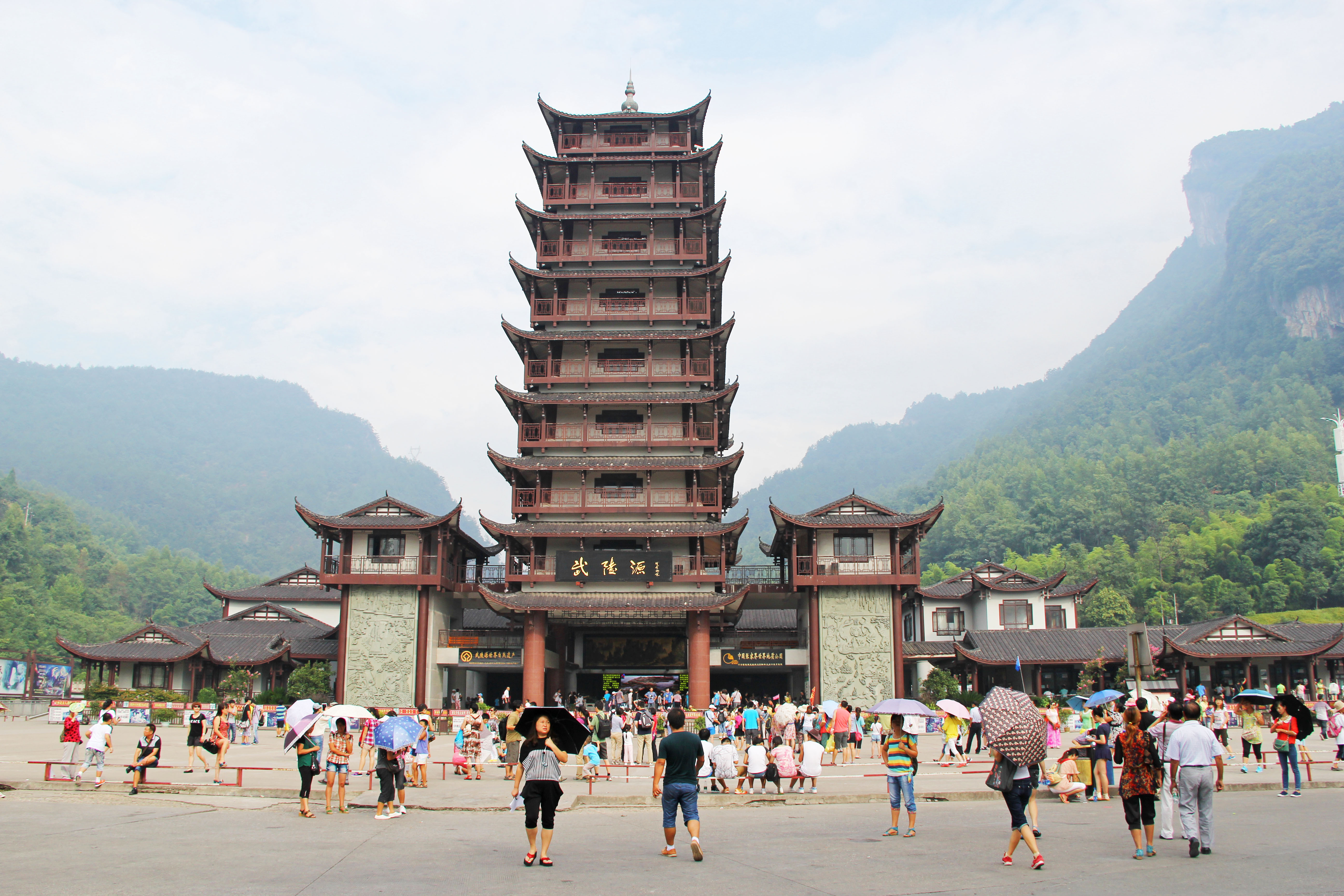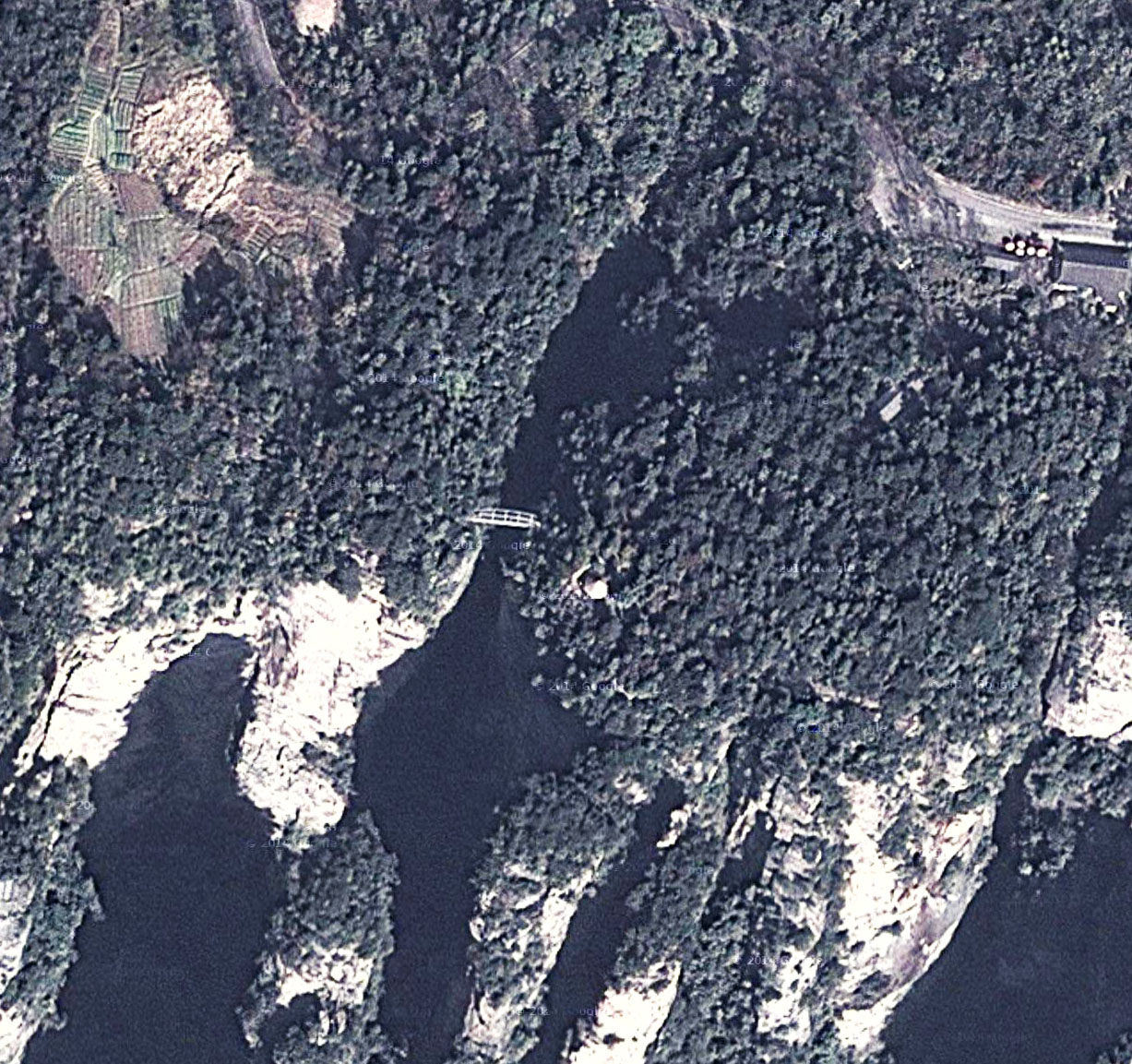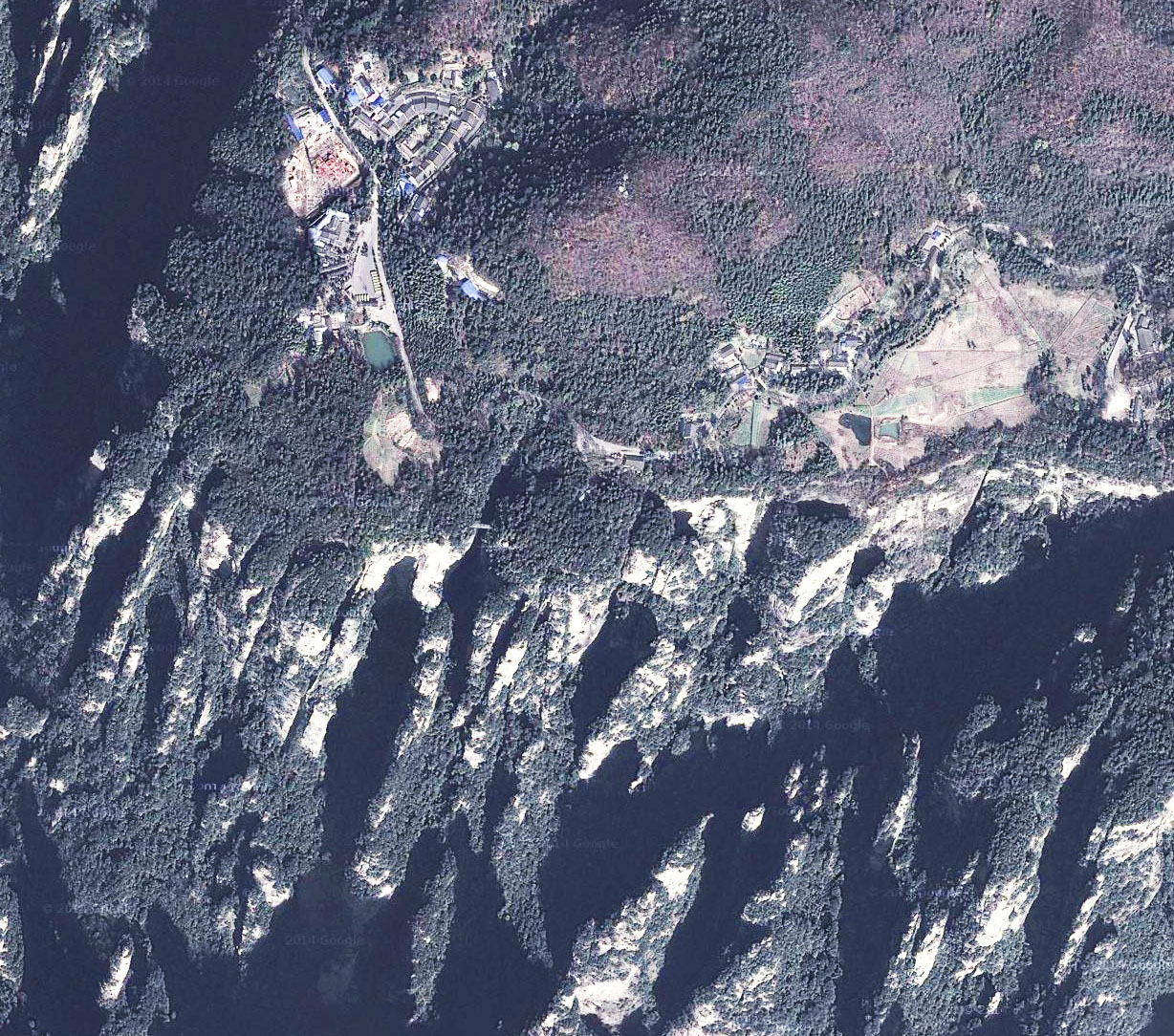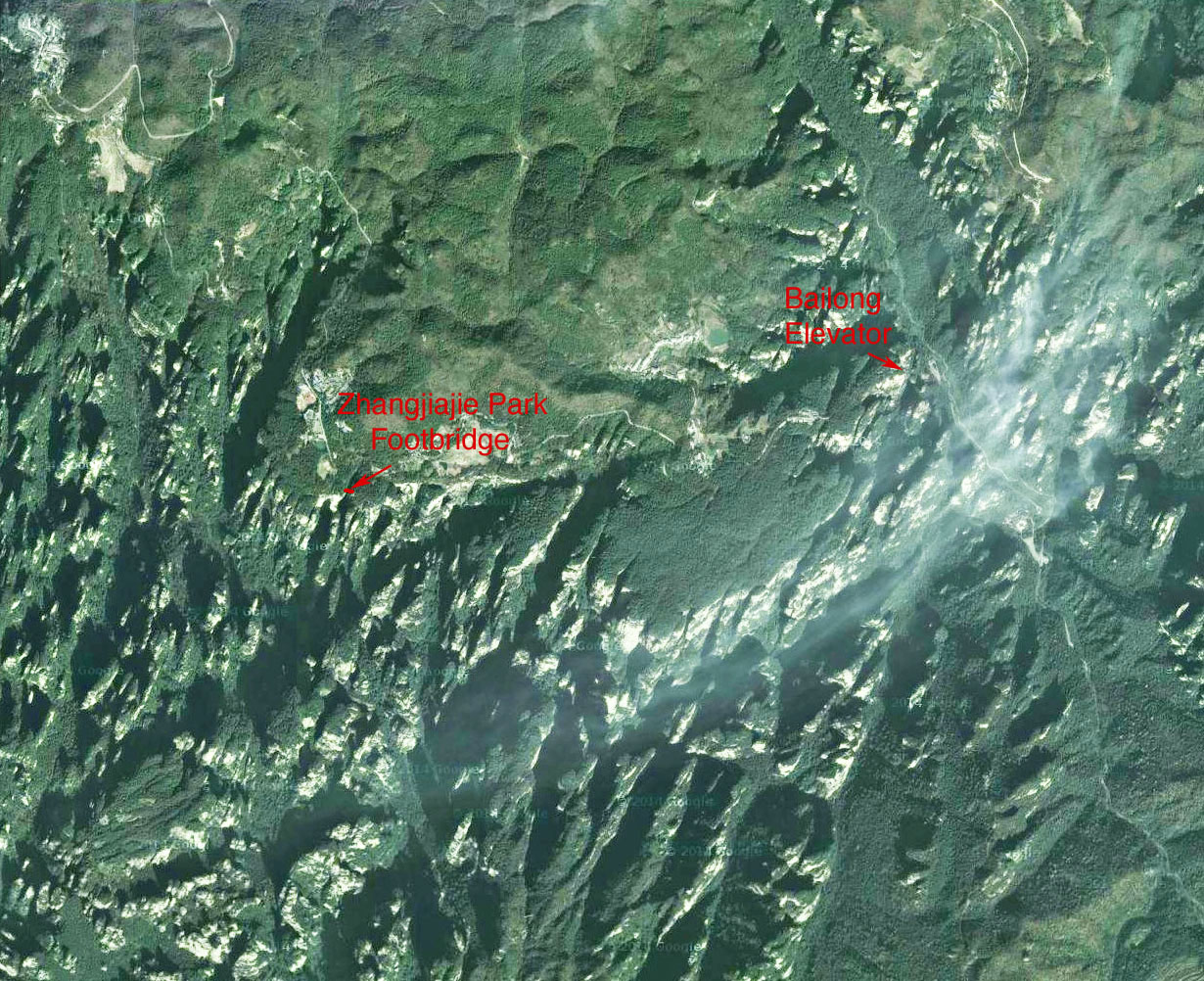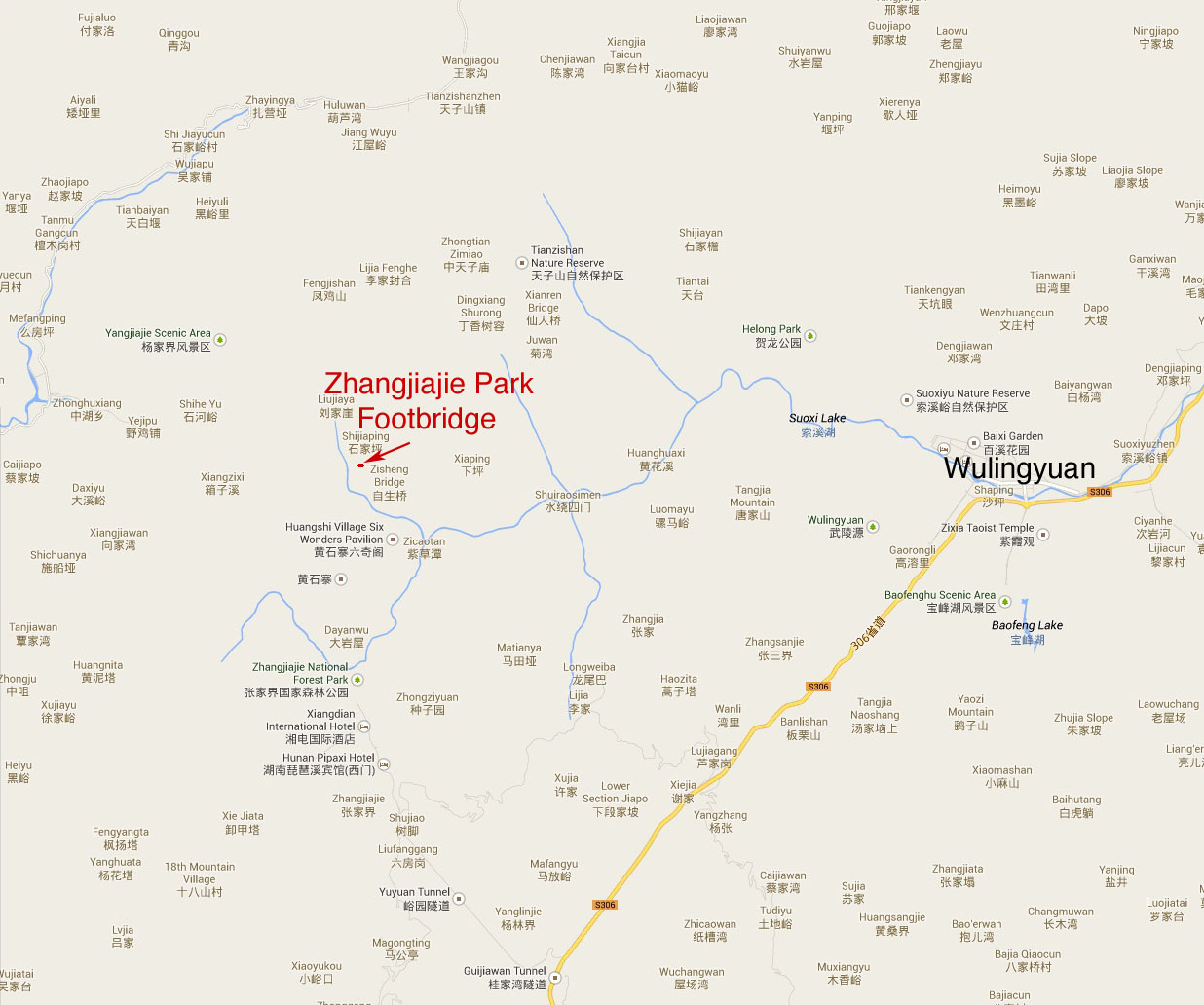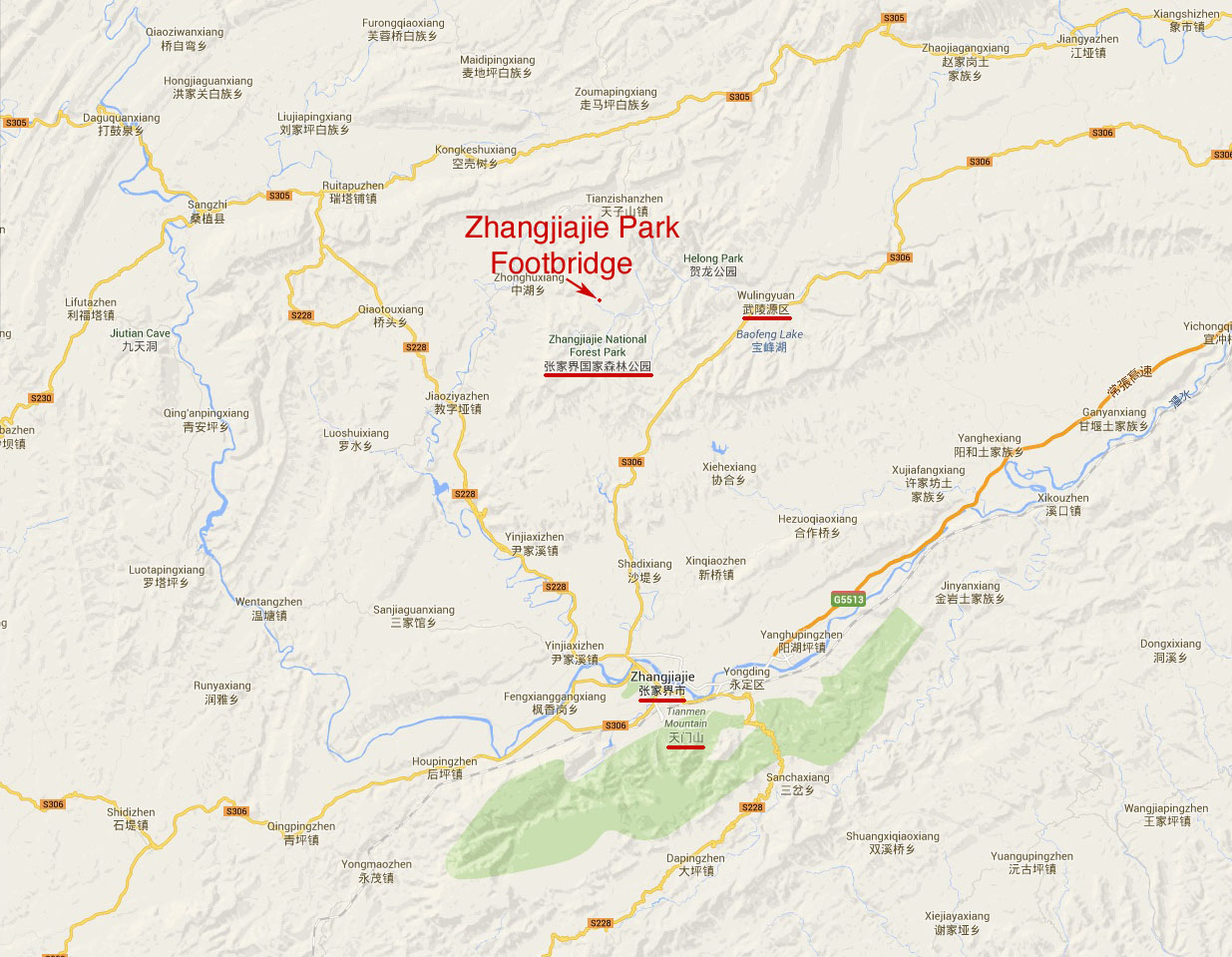Zhangjiajie Park Footbridge
Zhangjiajie Park Footbridge
张家界桥
Wulingyuan, Hunan, China
466 feet high / 142 meters high
72 foot span / 22 meter span
200?
The Zhangjiajie Park Footbridge is the 6th highest footbridge in the world after the Zhangjiajie Glass, Tianjishan, Sochi SkyBridge, Niouc and Yinzuotianmeng Footbridges. Located in one of China's most spectacular National Parks, the beam-truss bridge is crossed by thousands of tourists every year who marvel at the deep crevasse below the see-through grate. This jaw-dropping abyss puts the Zhangjiajie Footbridge ahead of any high bridge in the world for having the greatest ratio of height to span length with a vertical drop 6.5 times greater then its span length. This exceeds even France's Chatelet Bridge which has the world's second greatest drop to span ratio of 6 to 1.
The deck is supported on steel I-beams punctuated with oval-shaped holes. Above the walkway there are a series of steel tubes that form a kind of Vierendeel truss where there are no diagonal members. This unusual design was the cause of an odd phenomenon where the bridge continually oscillates from side to side when tourists are on the bridge. This movement was small - probably just a few centimeters - but it caused a number of tourists to feel uncomfortable. In 2014 or 2015 they widened the bridge and added horizontal truss beams that eliminated the previous oscillation problem. But the best solution might have been a complete replacement of the entire span with a prettier and more natural looking stone arch bridge.
Sometime between 2013 and 2015 the footbridge was widened as seen in the above view. The widened deck eliminated the odd side to side movement inherent in the original bridge seen in the first photo at the top of this page. Image by Eric Sakowski / HighestBridges.com
Image by Eric Sakowski / HighestBridges.com
Image by Eric Sakowski / HighestBridges.com
Image by Eric Sakowski / HighestBridges.com
Image by Eric Sakowski / HighestBridges.com
Image by Eric Sakowski / HighestBridges.com
Image by Richard Scott.
Image by Eric Sakowski / HighestBridges.com
Image by Eric Sakowski / HighestBridges.com
Image by Eric Sakowski / HighestBridges.com
A view of the side of the Zhangjiajie Park Footbridge before it was widened sometime after 2013. Image by Eric Sakowski / HighestBridges.com
Image by Eric Sakowski / HighestBridges.com
Image by Eric Sakowski / HighestBridges.com
Image by Eric Sakowski.
Image by John Brignoli.
Image by John Brignoli.
Image by Eric Sakowski / HighestBridges.com
Image by Eric Sakowski / HighestBridges.com
Image by Bruce Lee.
Image by Eric Sakowski / HighestBridges.com
Image by Eric Sakowski / HighestBridges.com
Image by Eric Sakowski / HighestBridges.com
Image by Eric Sakowski / HighestBridges.com
Image by Eric Sakowski / HighestBridges.com
Image by Eric Sakowski / HighestBridges.com
Image by Eric Sakowski / HighestBridges.com
Image by Eric Sakowski / HighestBridges.com
To reach the Zhangjiajie Footbridge you must ride the Bailing elevator up to a higher plateau. Image by Eric Sakowski / HighestBridges.com
A wider view reveals the lower half of the elevator is actually located in an underground tunnel. Image by Eric Sakowski / HighestBridges.com
A view of the Bailong elevator taken by photographing the reflection of the elevator ceiling and flipping it right side up. Image by Eric Sakowski / HighestBridges.com
The top of the elevator rewards visitors with a jaw-dropping view of the towering spires that inspired the look of the movie Avatar. Image by Bruce Lee.
Several of the photo spots have Avatar-like creatures. Image by Eric Sakowski / HighestBridges.com
Image by Eric Sakowski / HighestBridges.com
Image by Eric Sakowski / HighestBridges.com
The top of the famous kissing bridge peaks can be seen. Similar to the Tianmen Mountain hole, a natural bridge connects two spires more then 100 meters tall. Image by Eric Sakowski / HighestBridges.com
Many of the trees near the kissing bridge have locks on them to signify a bond between couples. Image by Eric Sakowski / HighestBridges.com
A giant pagoda marks the official east entrance to Zhangjiajie national park. Image by Eric Sakowski / HighestBridges.com
Zhangjiajie Park Footbridge satellite image.
Zhangjiajie Park Footbridge location map.
